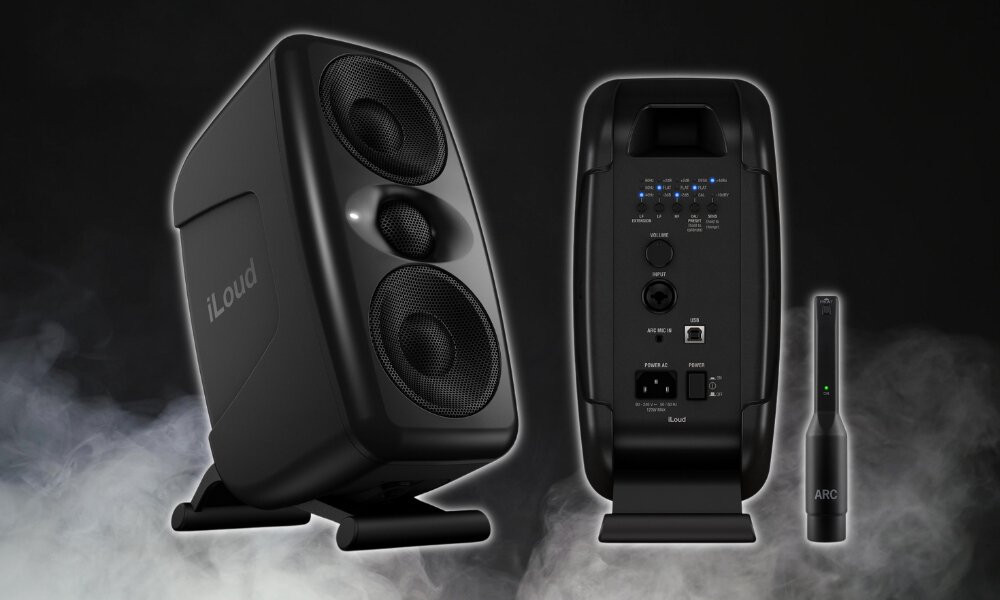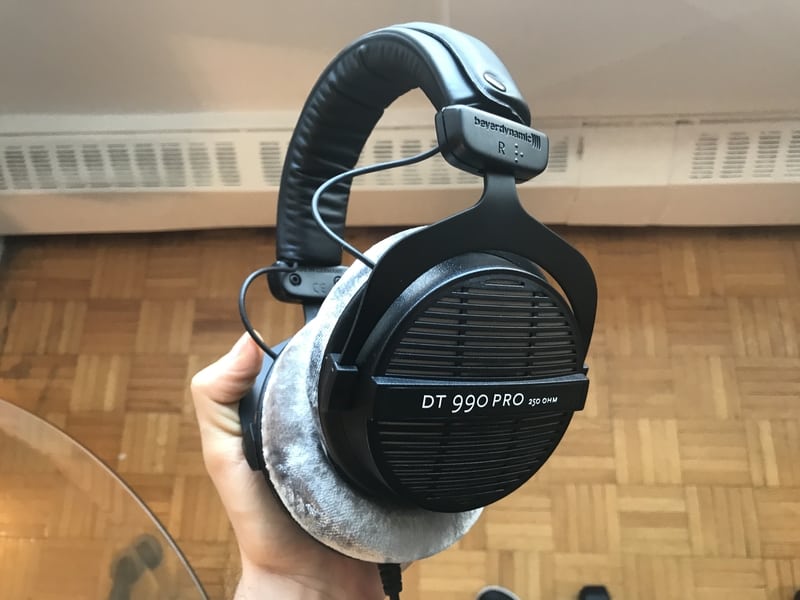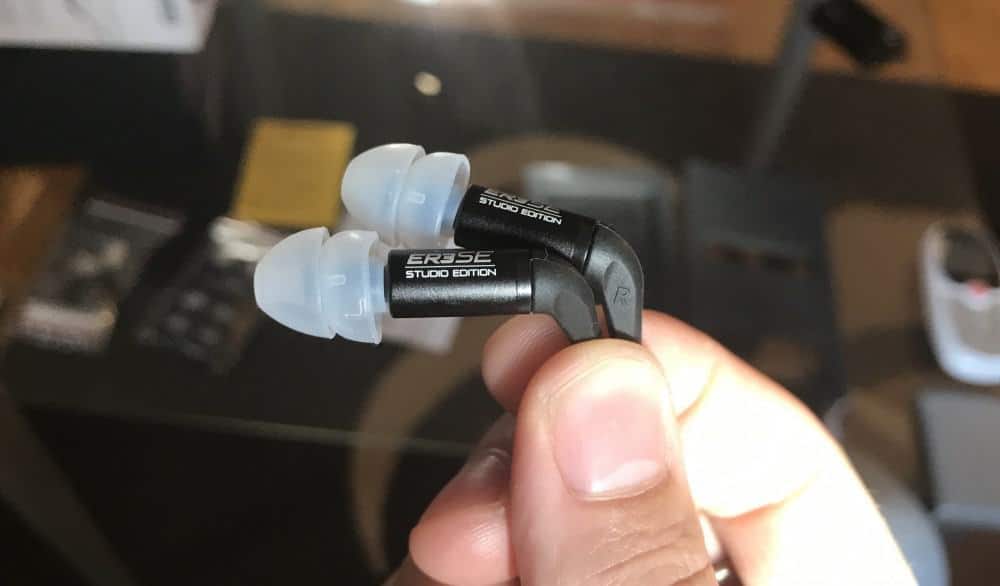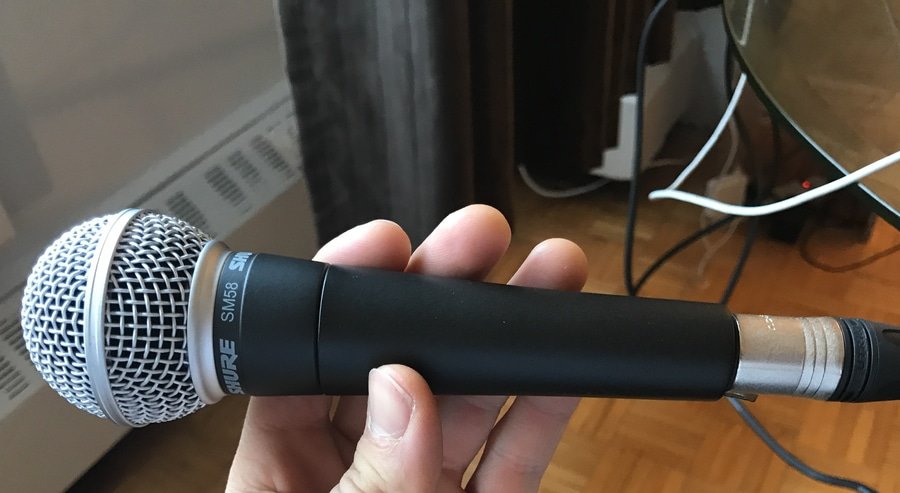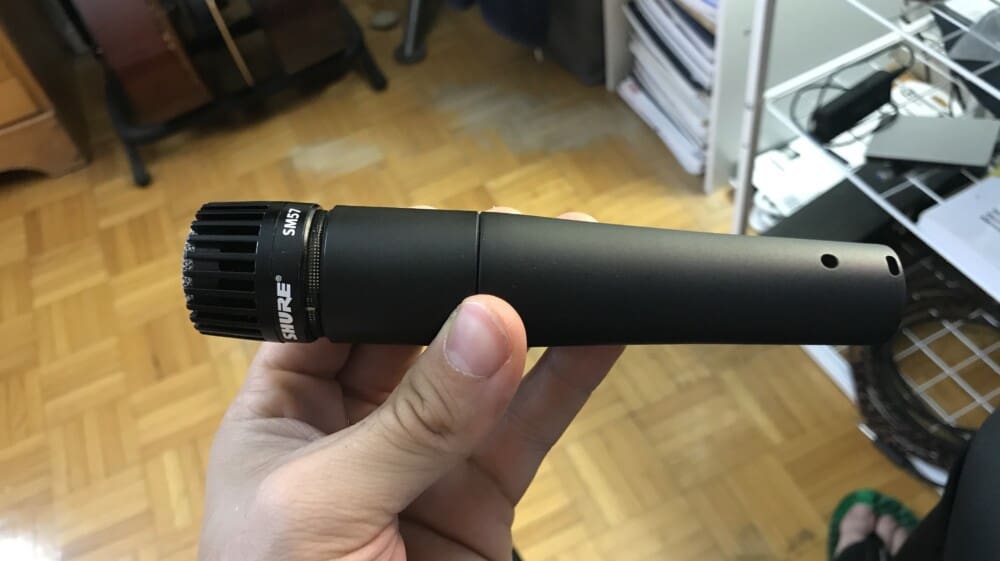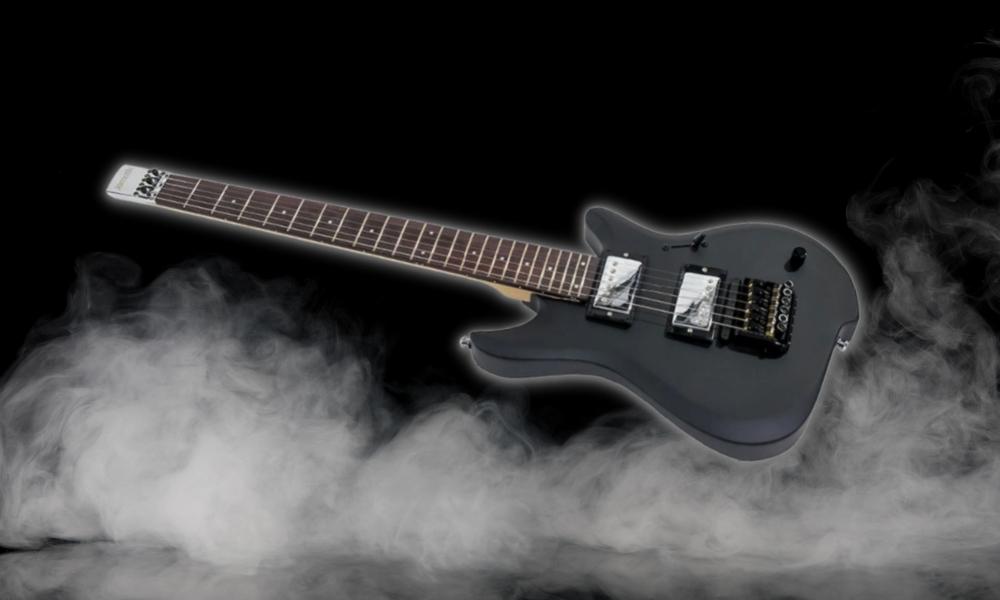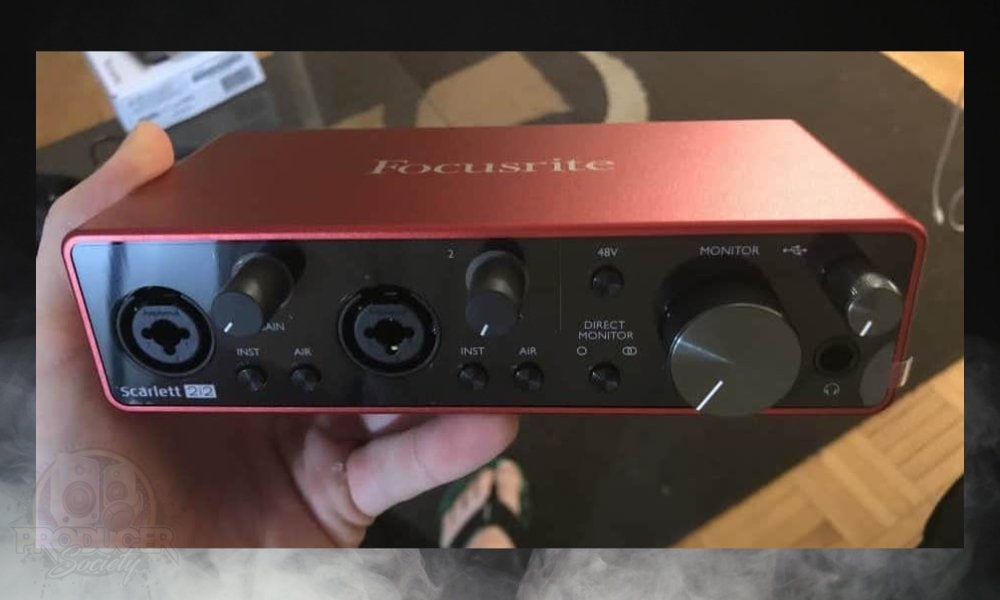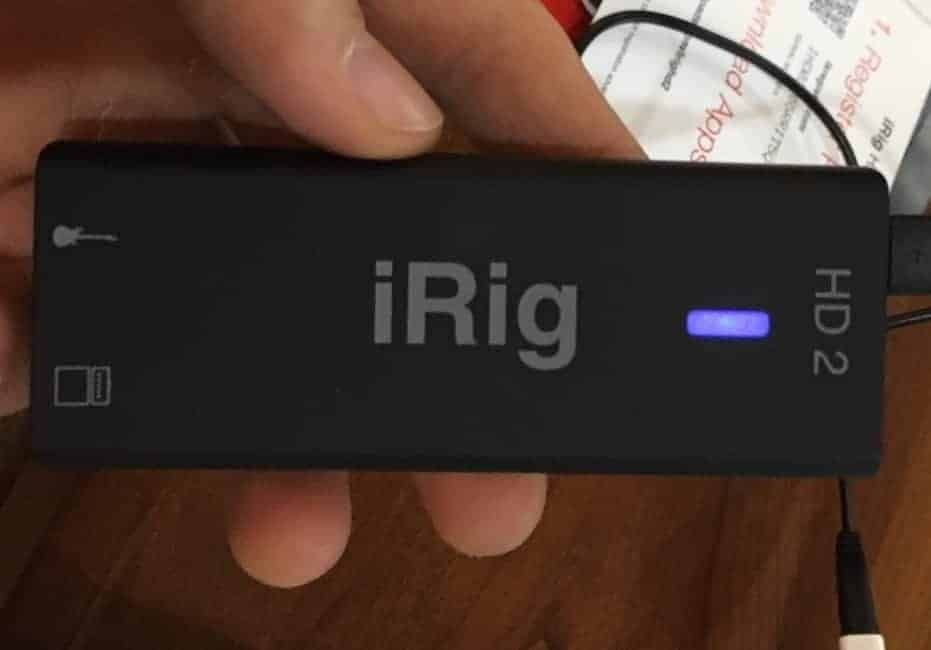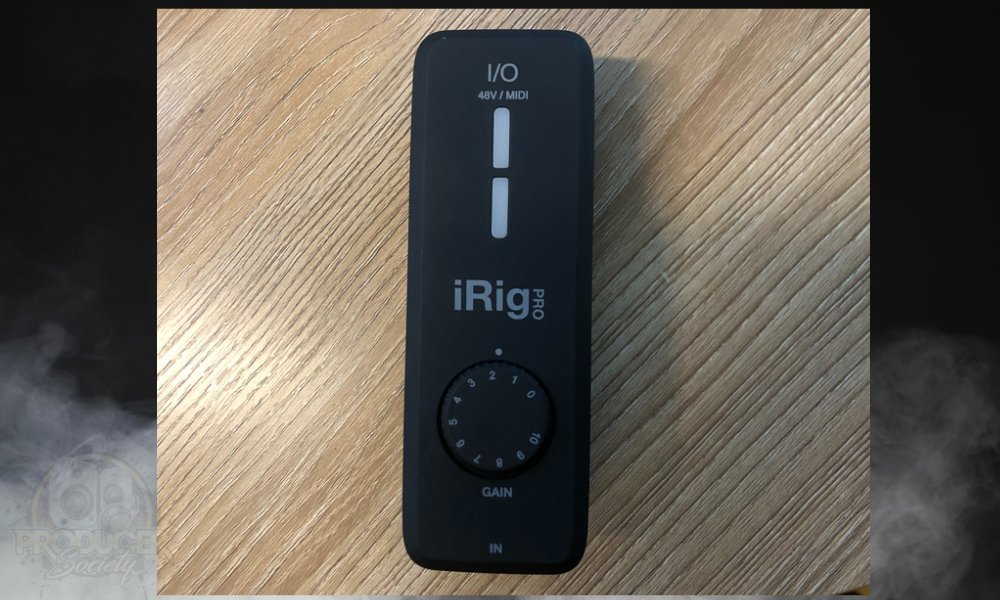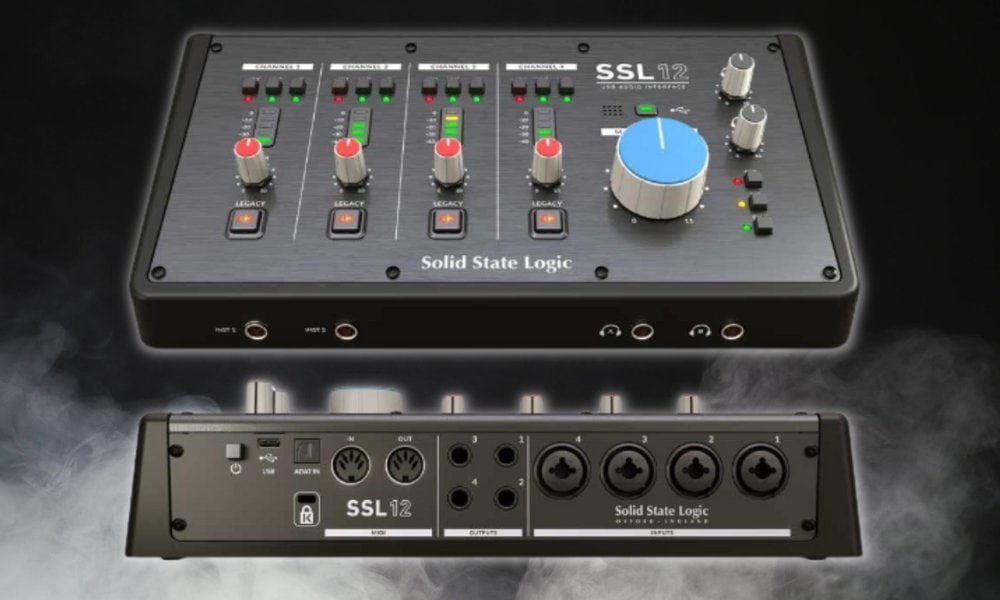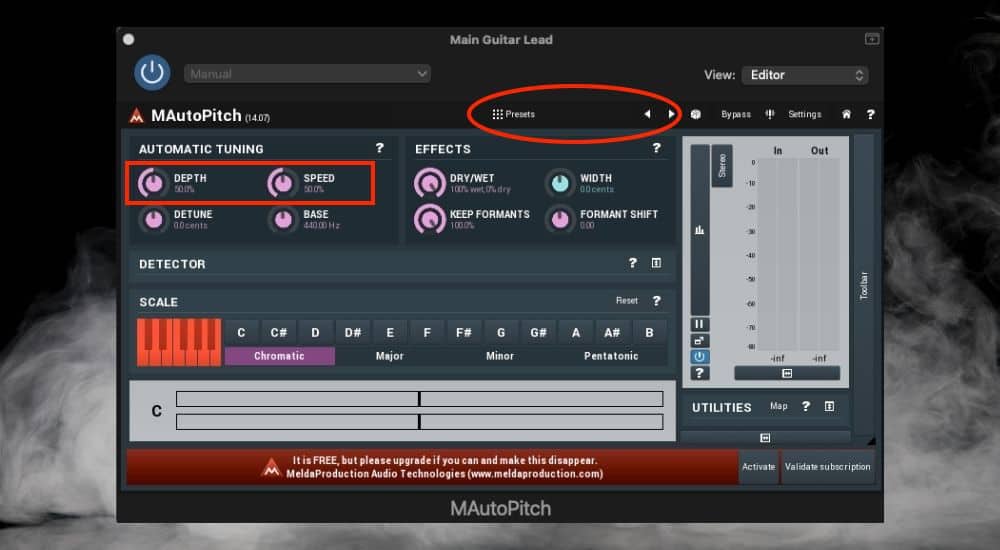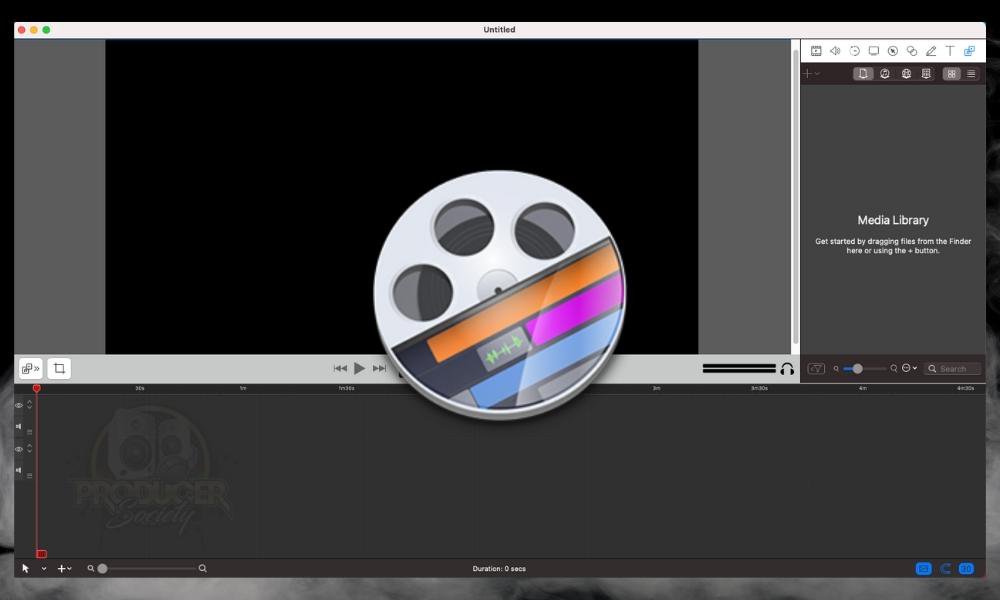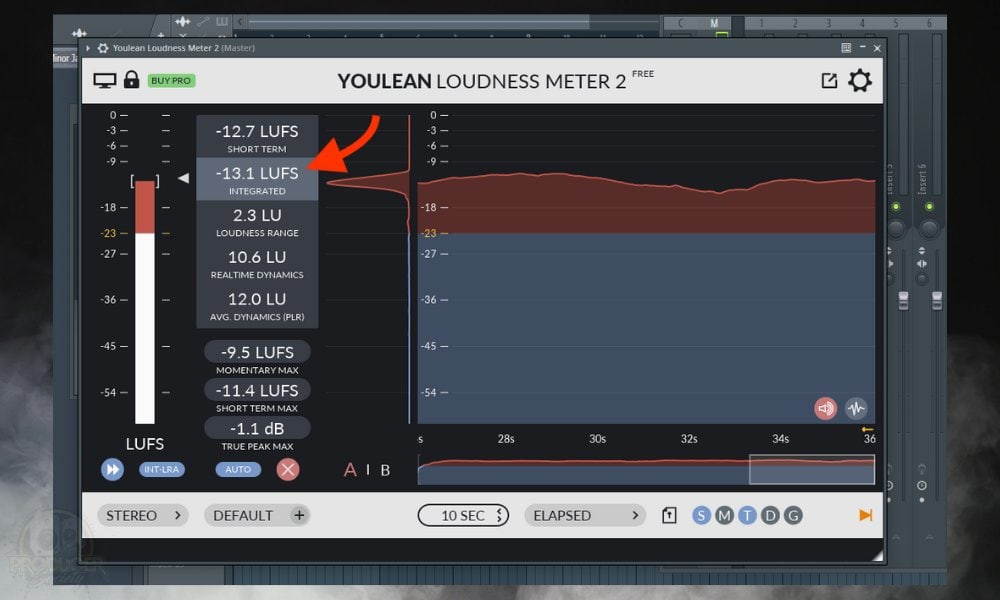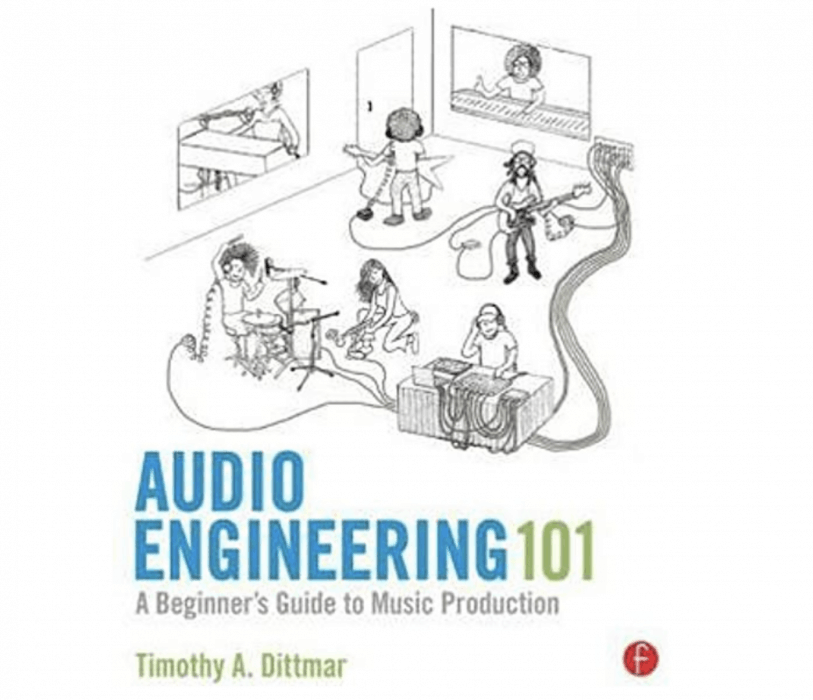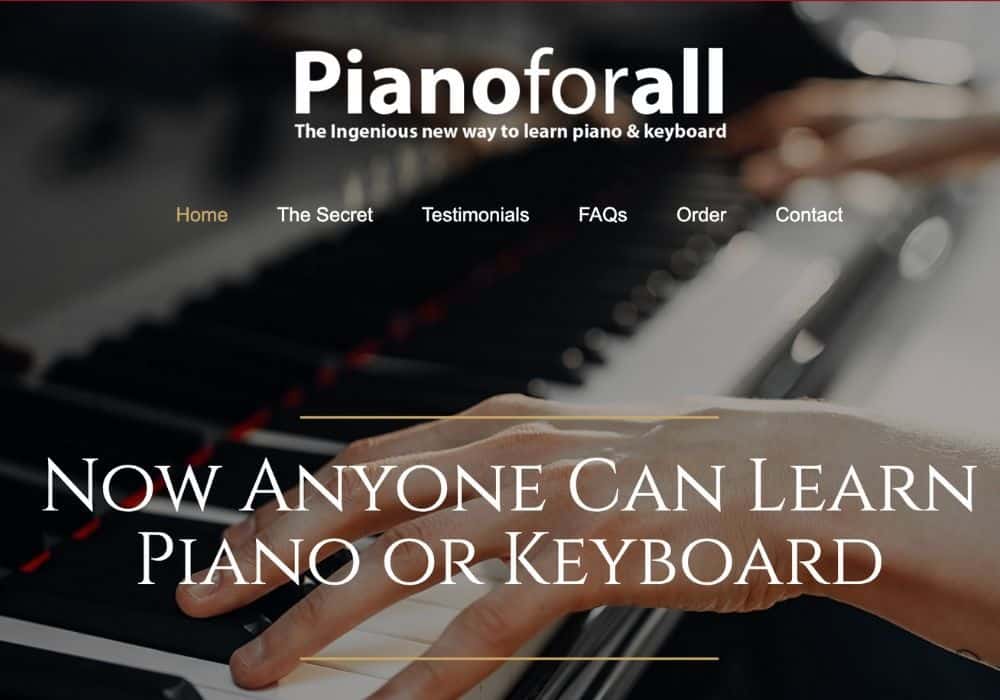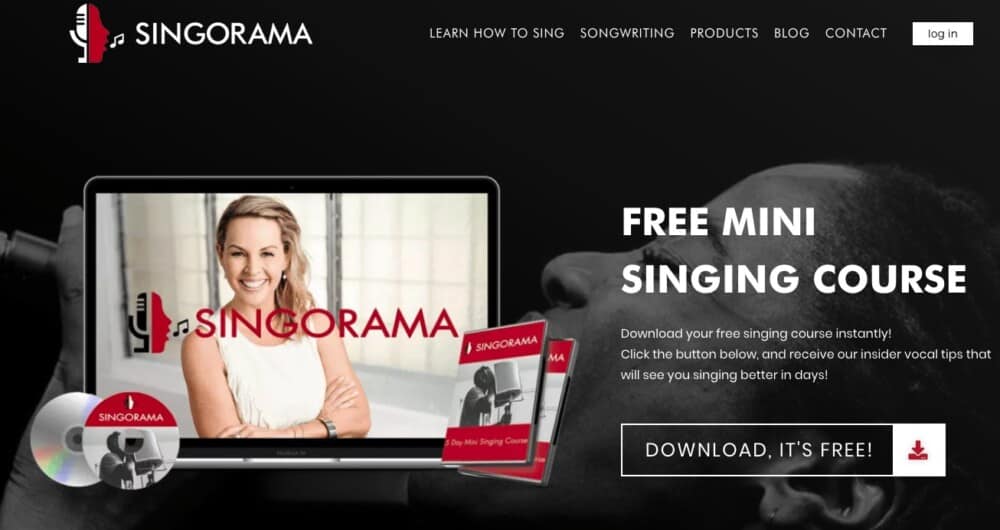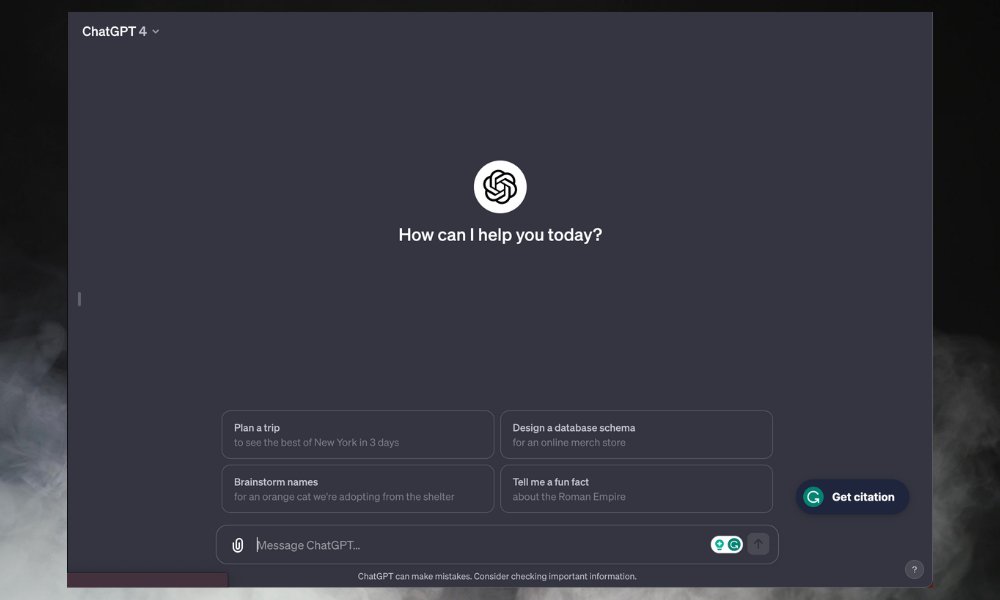As an Amazon Associate, I earn from qualifying purchases. Additionally, I earn a commission through each purchase made on Amazon, Clickbank, zZounds, Plugin Boutique, Plugin Fox, Thomann, Jam Play, and Punkademic from one of my links.
I’ve tested out a healthy amount of gear in the last 10-15 years, and I think I have a pretty good idea of what’s over and under-hyped. Because products get updates and new versions, I’ve included the updated or improved versions where necessary, ie, Guitar Rig Pro 7 vs Guitar Rig Pro 6.
I’ve also explained where a purchase was a mistake and I’ve offered something better instead. Every product on this list is something I either personally own and endorse, or it’s the recommendation of someone I respect.

Cables and Adapters
Amazon Basics Headphones Extension Cable
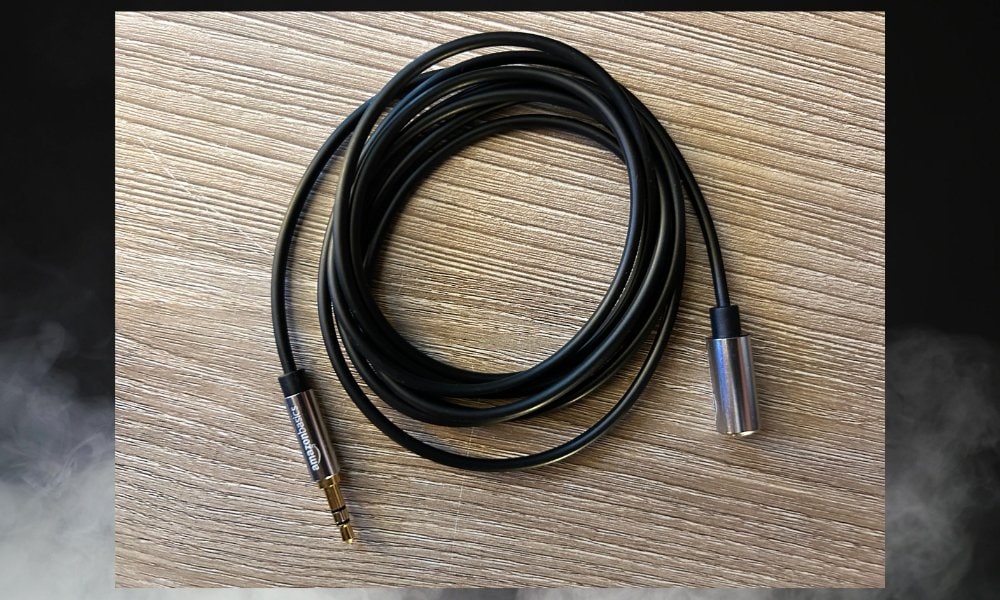
Everyone likes to hate Amazon, but there are some things I like about the company. This includes their proprietary cables and adapters. This TRS headphone cable extension is a great example of that.
You can check it out on my Storefront here.
I have two of these, one extends from the audio interface on my desk to the vocal recording booth on the other side of the room. Gets a 10/10 from me.
Digiflex (Amazon Basics) XLR Cable
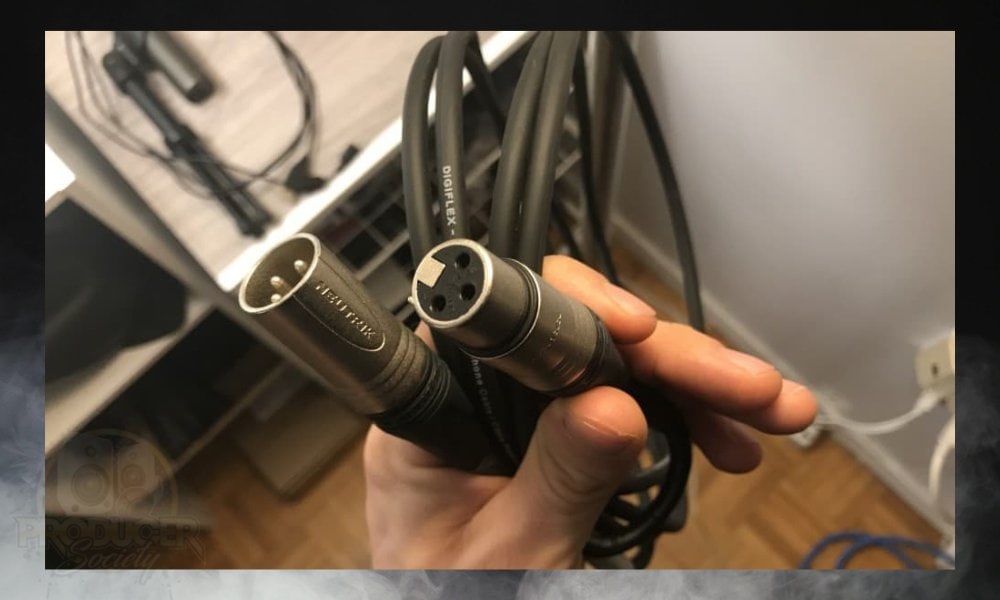
An XLR cable is just an XLR cable, right? No, wrong. If you spend too little money, you risk getting a garbage cable that’ll break on you within a short amount of time. You can check it out on my Storefront here.
Digiflex is a Montreal company, I believe, but I also have an Amazon Basics one that works just as well. No complaints. I’ve linked to it in the image’s caption.
Ernie Ball Right-Angled Guitar Jack

If I had to go back in time, I would only buy right-angled guitar cables, because they make playing the guitar while sitting down a lot easier. I explained this on my Amazon Storefront video.
When you use a standard guitar cable, I find that it’s a nuisance to sit down on a couch with the instrument plugged in, because of the way it pokes into the furniture. This also wears the cable down slowly over time.
Best for guitarists who mostly play sitting down. That best describes me for sure.
The right-angled guitar jack is specially made for guitarists such as myself who almost exclusively play while sitting down.
This is my go-to cable that I use now all the time, and I rarely reach for my other ones, unless it’s for plugging into the output of a guitar pedal or some other extraneous gear.
j5 Create Multiport Adapter
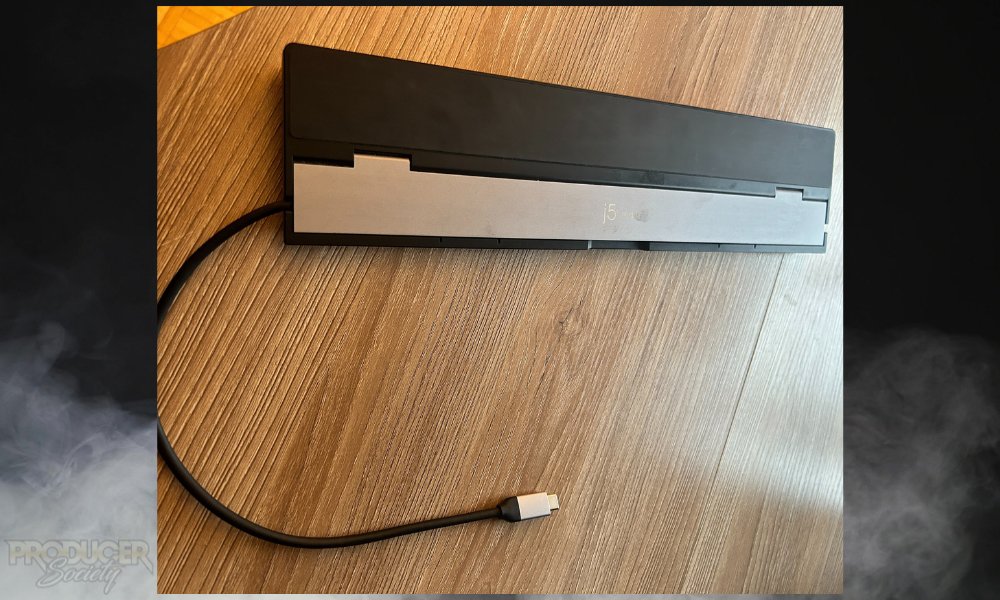
I read a funny blog post one time from a guy who was talking about how multiport adapters were all garbage, and I couldn’t help but agree.
Most are poorly made and then some company just slaps their logo on it. You can see my Amazon Video on it here.
Keep in mind that one USB-C port is for charging and another is for file transfer. The HDMI ports are for different purposes as well.
The j5, while imperfect, works the way that it should and I’ve had it for almost 2 years now. I use it every single day and approximately 70% of its ports are in use at all times.
Mackie HM Series 4-Way Headphone Splitter
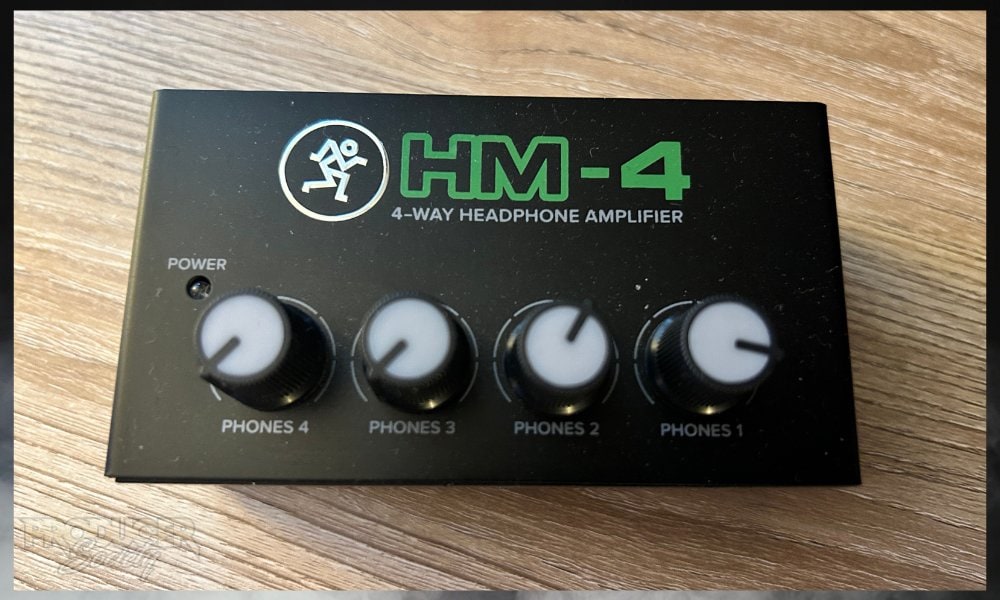
I bought this headphones splitter so I can have a vocalist monitoring their recording in the vocal booth and then I can listen with headphones at the same time. This splitter/amp works great despite the fact it costs almost nothing.
However, there are 2 problems with it:
1) Once you exceed halfway (although it’s not necessary to go that loud), you’ll start to hear noise.
2) The knobs aren’t 100% sturdy.
The Mackie HM-4 isn’t perfect, but it’s extremely good value for the price. You can try the Behringer HA400 for a slightly better option.
MXR Stereo Cable
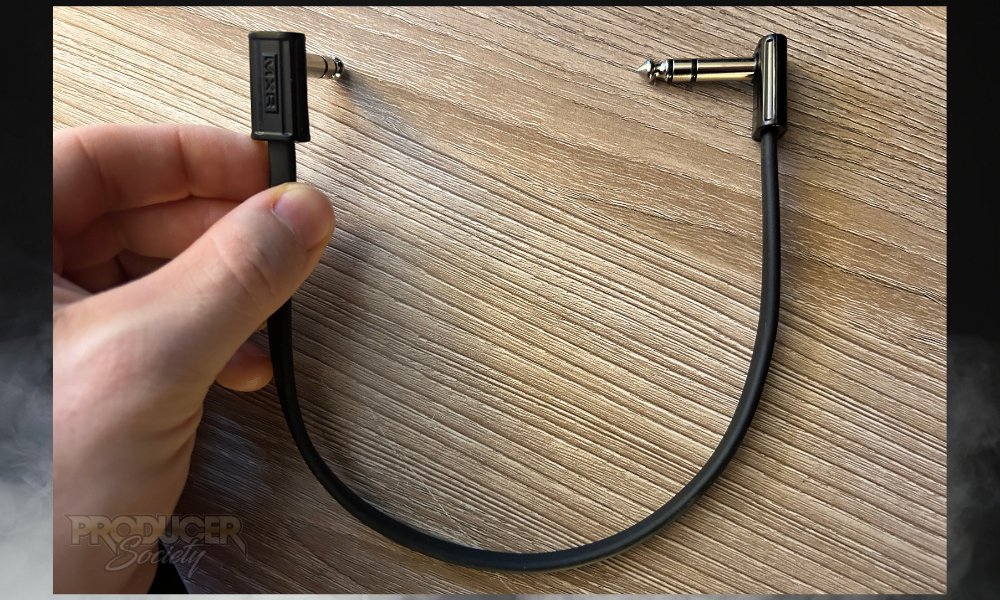
Not much to say here other than that it’s a stereo cable that works. This is the cable you’ll need to use if you want to connect your Mackie HM-4 to your audio interface. See my video for it here on Amazon.
MIDI Cable [15-Feet]
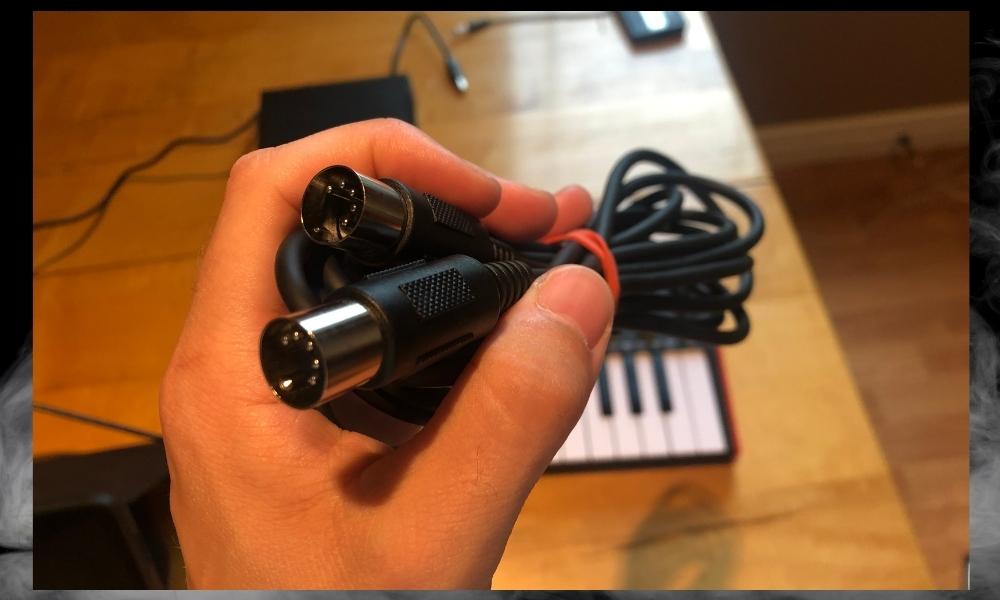
I have a few HOSA cables and they work great. This is the cable I use to connect my audio interface on my desk to my digital piano which is on the other side of the room.
RoadHOG Cable

The RoadHOG cable is the cable you get once you’re sick of cables breaking and wearing out. They’re made out of really thick material.
Rocketfish HDMI Cable
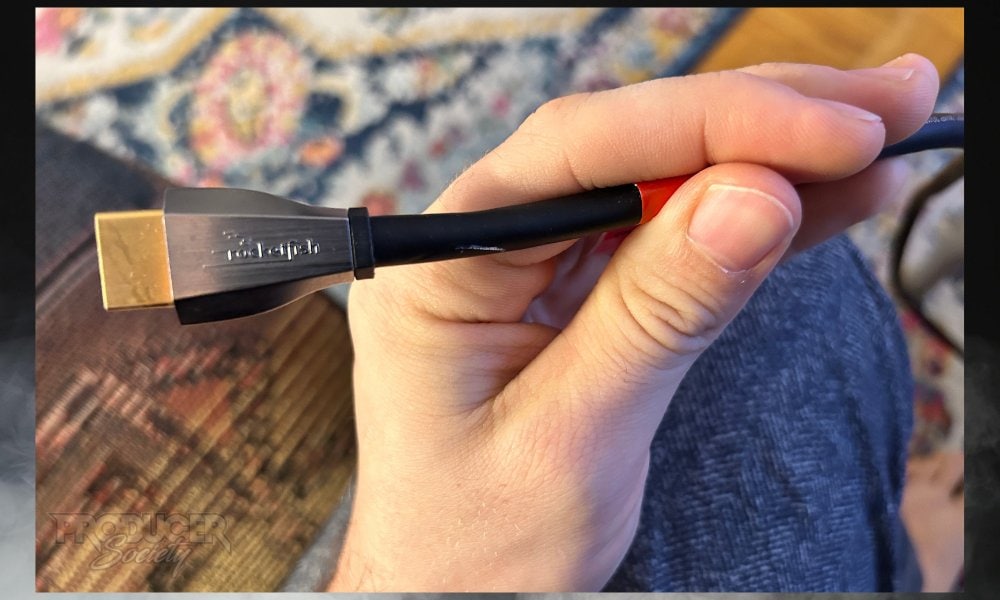
I paid a lot of money for one of these cables and in retrospect, I’m glad I did. I’ve used it daily for 2 years and it still causes me no problems. Gets a 10/10 from me dawg.
HDMI cables are a lot like multiport adapters in the sense that they tend to break between 6 and 12 months. I prefer to buy it right instead of buying it twice.
USB-A to USB-B (Printer) Cable

It’s not a bad idea to have a couple of these lying around, because they’re necessary for most equipment that music producers need.
USB to USB-C Cable (10-Feet and Red)
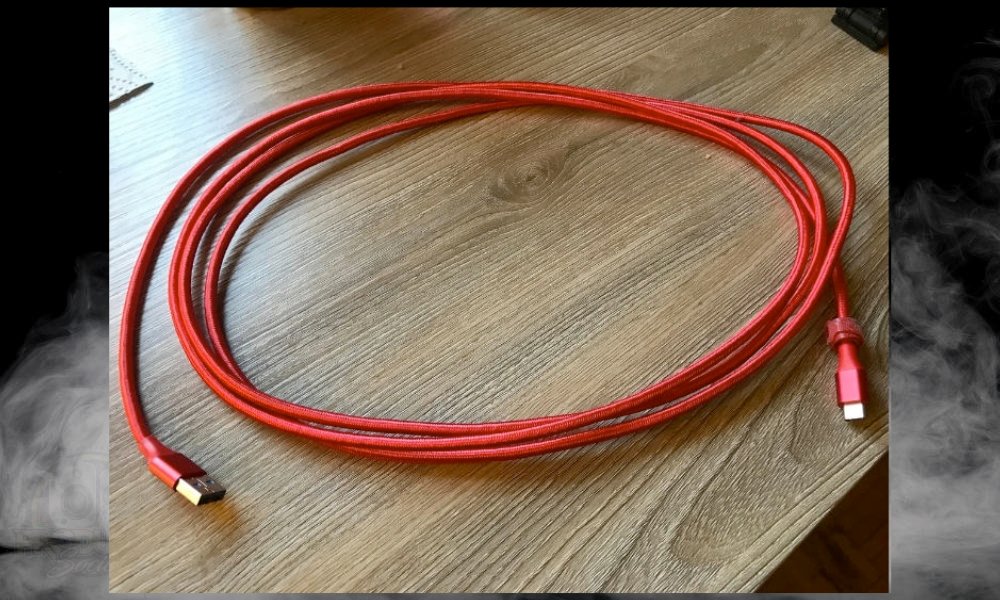
Nothing to say here other than that the cable works and it’s reliable. I’ve had it for a couple of years now and it’s still going strong. Amazon Basics is a safe bet.
USB to Micro-USB Cable
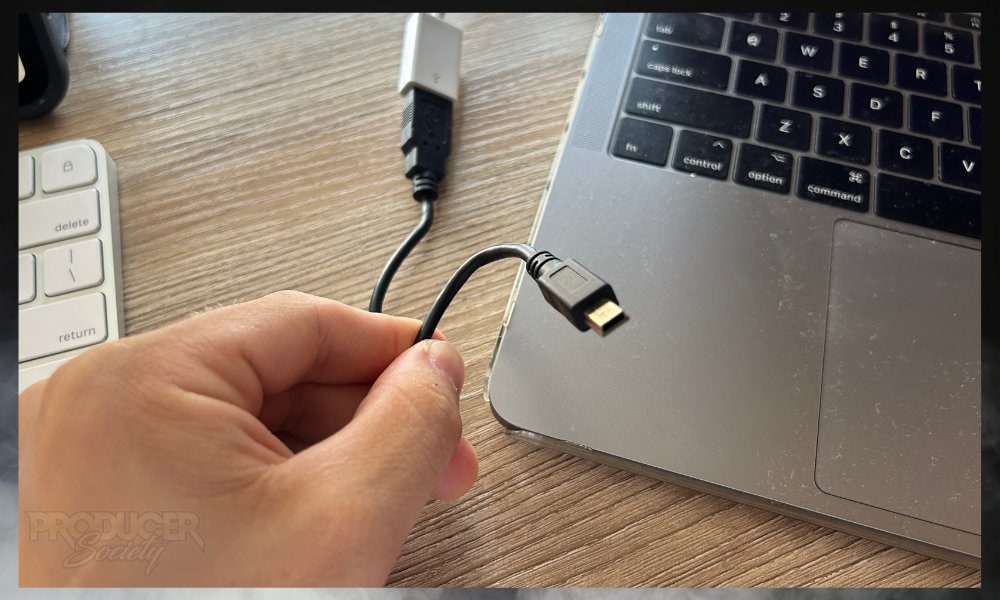
USB-C Cable
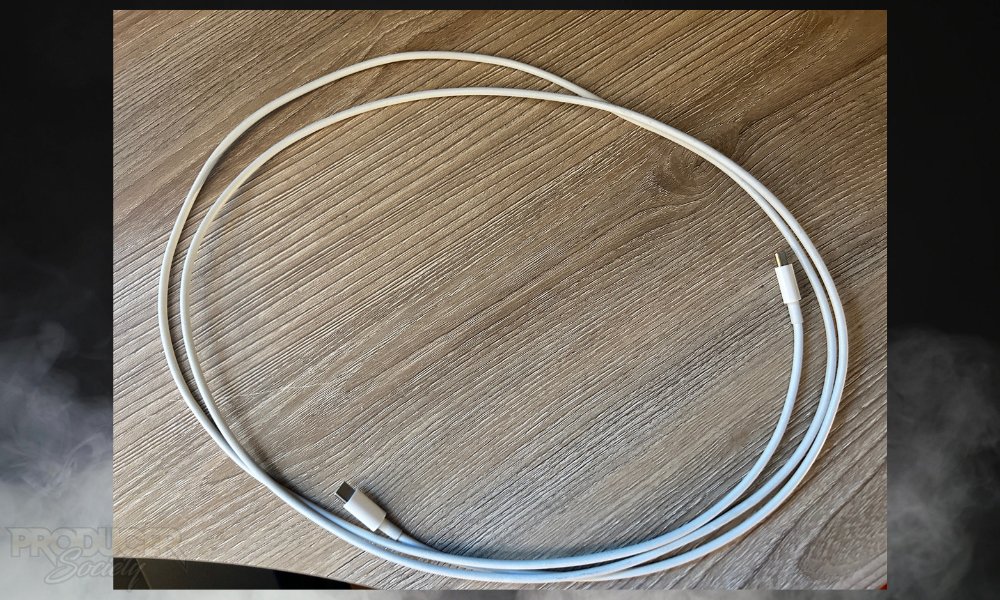
USB-C to USB Adapter
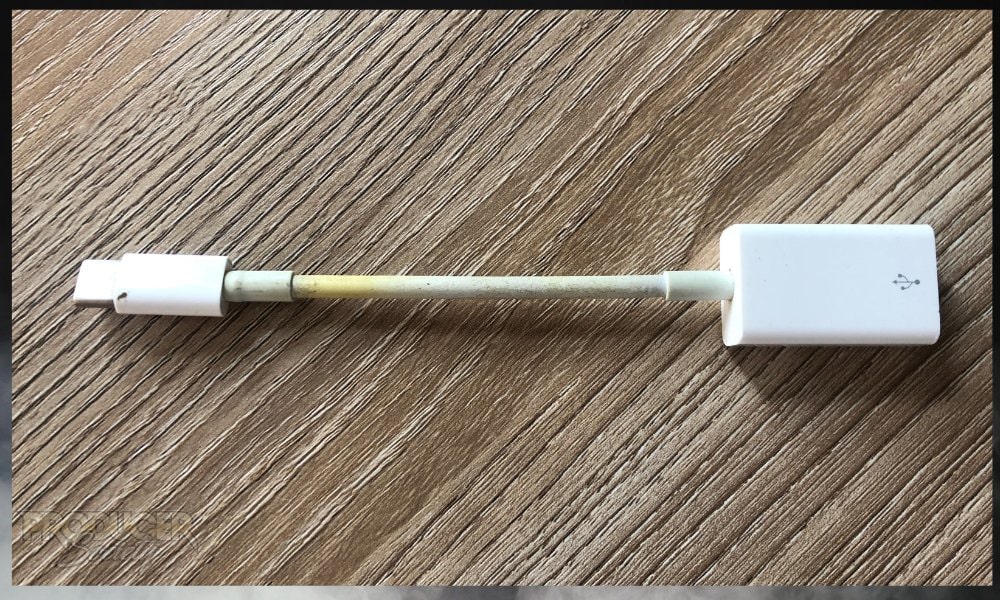
1/4″” to TRS Adapter – UGREEN
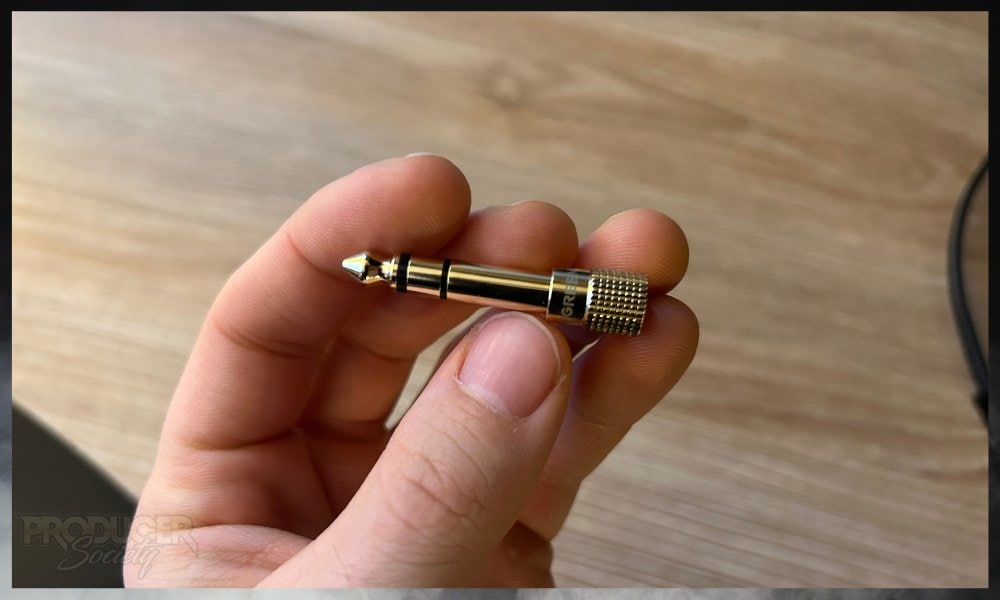
They’re also surprisingly well-built. They don’t feel or look cheap.
Speaker Systems and Monitors
iLoud Micro Monitors from IK Multimedia
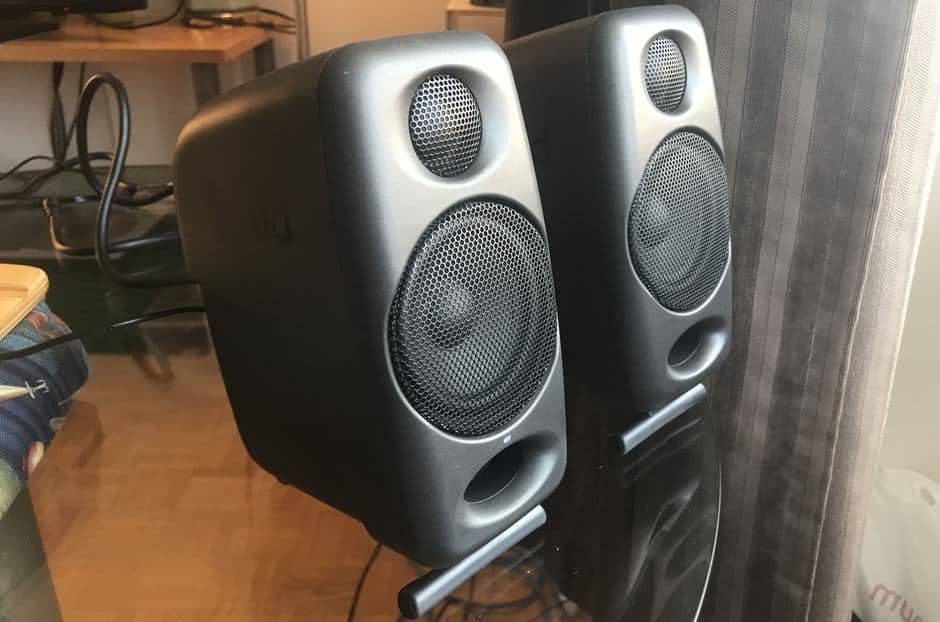
IK Multimedia’s iLoud Micro Monitors are easily some of the best computer monitors on the market right now for several key reasons. One reason is that they sound fantastic.
In a recent article all about them (which you find at this link here), I stated that the iLouds were easily one of the best purchases I made in 2020. You can see my video here on Amazon.
Not only do they sound fantastic, but they’re incredibly small and compact, so they’re perfect for the travelling music producer or musician who needs high-quality monitors on the go that are easily packed away in one’s suitcase, luggage, or even just your backpack.
The one criticism I have is that they aren’t loud enough if you want to party, but they’re not meant for that.
The entire monitor itself is around 8 inches high and 4 inches wide, and the speakers themselves are around 3 inches.
The way they’re constructed makes them incredibly sleek and easy to put wherever you need them, either on your desk or mounted on a mic stand.
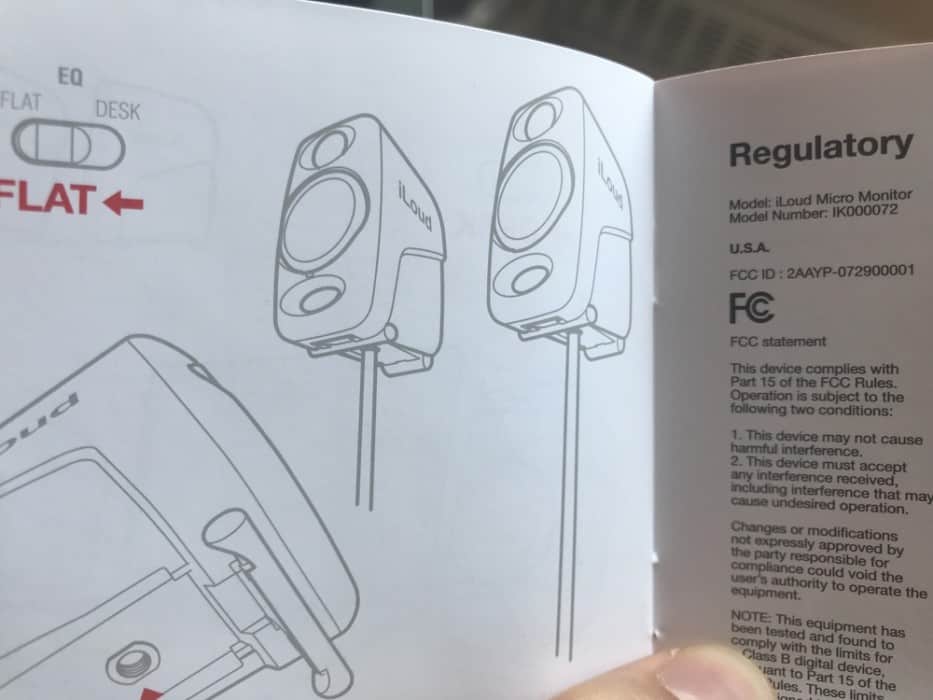
There are several features that make them some of the best speakers on the market. In addition to their quality and portability, the iLoud’s Bluetooth capability makes them incredibly convenient.
For instance, I most often use them as my music production speakers, a process by which I’m often mixing, DAW-mastering, and producing.
However, if I want to take my laptop and go sit on my bed while watching a YouTube video, I just have to un-connect them and set up the Bluetooth connection.
It’s as simple as pressing the button on the back of the unit and going into the System Preferences > Audio > and then Bluetooth.
iLoud MTM Monitors
I don’t own the iLoud MTM Monitors, but my experience with the iLoud Micros has been so positive that I plan getting these next when I’m ready to upgrade to slightly bigger speakers.
The thing is that I haven’t even felt the need to upgrade yet, other than when I’ve wanted to use the Micros for partying (which isn’t what they’re meant for, at all).
Headphones
AirPod Pros
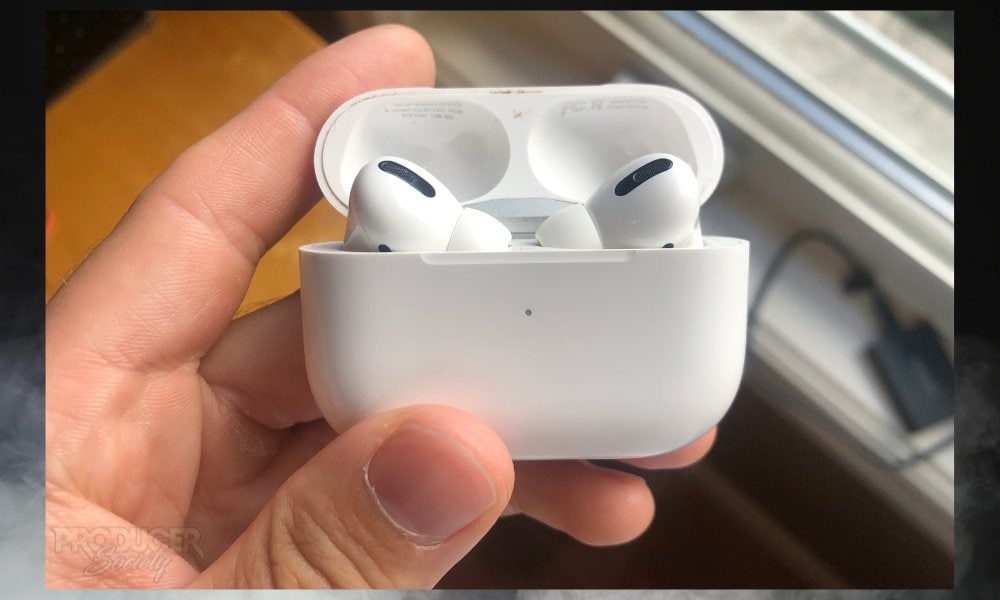
I use the AirPod Pros every day for casual listening. I also use them for mixing.
The AirPod Pros are what 20-30% (or more) of the population are using to listen to music, so you should know how other people hear your mixes.
Because they’re consumer headphones, they tend to have a bit more bass. I talked about one thing I didn’t like about them here on the Amazon Store.
Audio Technica ATH-M50xBT

I don’t own the Audio Technica ATH-M50xBT2 (on Amazon/Thomann/zZounds) but I wish I would’ve gotten them first.
I wish I would’ve got the ATH-M50xBT2 to start because they have the option to switch between wired and wireless technology. This means they’re great for music production and casual listening.
As I’ve explained elsewhere, Bluetooth headphones aren’t the best for mixing and music production because Bluetooth technology compresses the audio and leads to a loss of infidelity. But if you can connect them with a wire, you’ve suddenly got the best of both worlds.
Beyerdynamic DT 990 PROs (250 ohms)
Beyerdynamic’s DT 990 PROs, similar to the iLouds, are right up there in terms of one of the best purchases I’ve made over the last few years. More information on them here. There are some imperfections though which I discussed in my Amazon video.
While they’re not number one, I’ve been truly impressed by how amazing these headphones are. They sound fantastic.
It’s worth mentioning right off the bat that these are high ohm speakers, so they need either a headphone amplifier, a DAC, or they need to be used with an audio interface.
For that reason, Beyerdynamic’s DT 990 PROs are not the best choice of headphones for those of us who want a pair of headphones that we can also take on the train.
If I had to do it all over again, I would’ve gotten the 80 ohms version, because then they don’t need to be driven by an audio interface or headphone amplifier.
They’re simply not created with such users in mind; they’re meant for the home studio.
Either way, the amount of detail in these headphones is truly what makes them shine, in addition to their comfortability. I’ve noticed that many of the mixes I’ve created don’t sound as good as I thought after using the DT 990’s.
After listening to them with powered up headphones, little distortions in the mix, including crackles, or mid-range muddiness frequencies became all the more clear, essentially proving to me that the headphones do exactly what they’re supposed to: highlight the imperfections in the mix.
Typically, I do the vast majority of the mixing process using studio monitors, either using my iLouds or the KRK RP5’s and then finally switching over to the DT 990s to hear it one more time up close and personal.
I like to listen to the mixes across a number of different speaker systems, just to see how they sound, including even a pair of old iPod headphones because, ideally, you want your mixes to sound great across every type of speaker system available.
If I intend on using the Beyerdynamic 990s primarily for a few hours, I find they’re fantastic in terms of their comfort. They have giant foam muffs that make them extraordinarily comfortable.
I would argue that you can listen for up to 3-4 hours without getting sore ears.
I’m happy that I picked up a pair, and you should too if you’re serious about getting better mixes.
Etymotic Research ER3SE Studio Edition
It’s been 3 years since I got the Etymotic Etymotic ER3SEs and I really like them for mixing and mastering. However, there are 2 things that are annoying about them. The first is that they require you to replace the filters on them on a semi-regular basis. I talked about this in my Amazon Video.
The ER4SRs are what I would get if I was buying them brand new again, instead of the ER3SEs.
This means you need to buy filters specially made for them by Etymotic. If you don’t replace the filters, they start to act weird, ie, one headphone will cut in and out.
The second thing is that they go pretty deep into your ear, which means you need to clean them quite often. That said, they sound great and they’re ideal for music production if you prefer ear buds.
Etymotic Noise-Canceling Earbuds
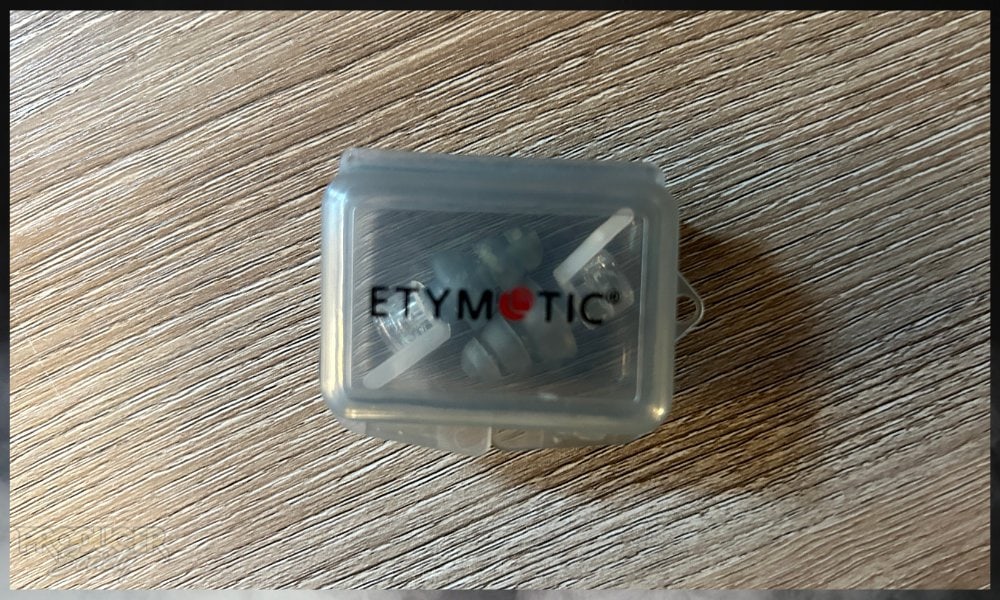
While I consider Etymotic to be a company with imperfect products, I still like their stuff because they’re typically of a premium quality.
These earbuds are a great example of this. If I ever need to use headphones, whether I’m sleeping in a Las Vegas hotel room on NYE, I’m trying to sleep next to noisy neighbors, or I need to protect my hearing at an event, these Etymotic earplugs are what I use.
They come in a nice little box so you can take them in and out of your ears and store them away whenever you want.
Microphones
Audio Technica AT2035 Condenser Microphone
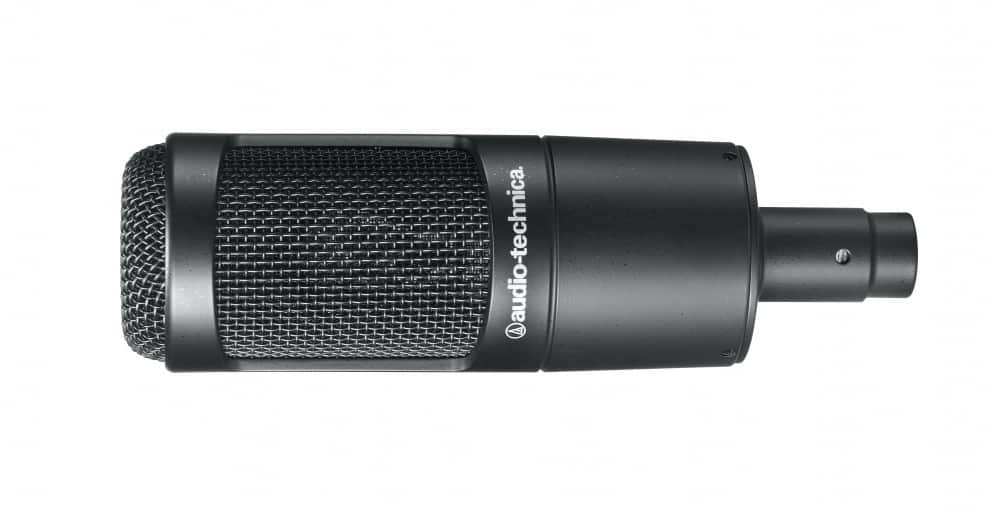
The AT2035 is where we start to get more serious in terms of recording sounds that are of higher quality.
For instance, if you want a fantastic acoustic guitar recording, the AT2035 is a wonderful microphone for picking up on all of those delicacies and transients that fill out the mix and make it sound great.
If I were to do it all over again though, I would start with the AT4040 bundle (on Amazon) right from the start.
However, remember that the AT2035 is a condenser microphone, so it needs phantom power from an audio interface. It’s also a lot more delicate.
Put simply, the AT2035 can’t be dropped dozens upon dozens of times like the Shure microphones. It’s not meant for performances that much. It’s meant more for recordings.
Audio Technica AT2021 Condenser Mic
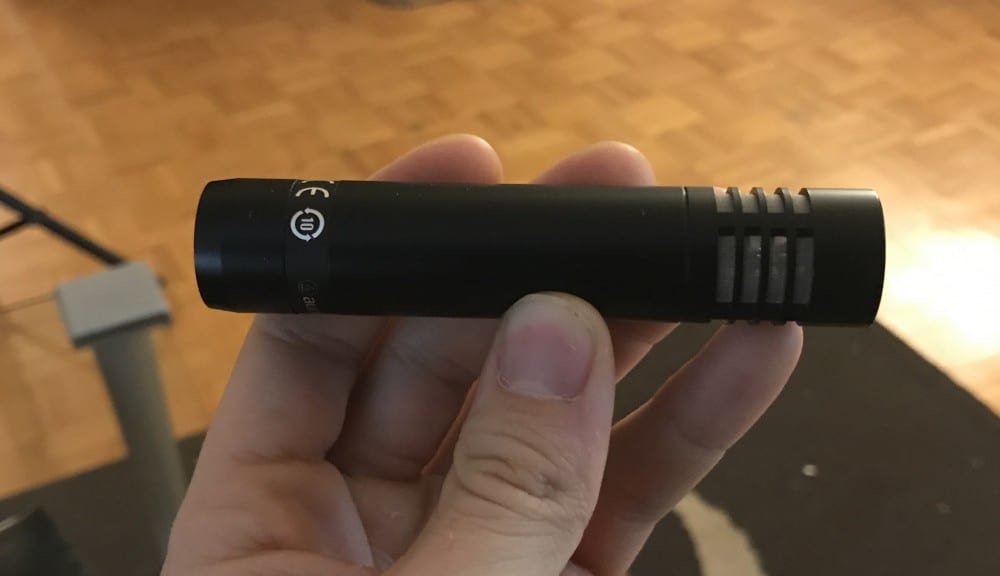
When I first bought the AT2021, I was honestly quite surprised by how small and tiny it was, but it doesn’t disappoint when using it for what I bought it for: acoustic guitar recordings.
As I stated in my acoustic guitar recording guide, the AT2021 sounds great for acoustic instruments but it isn’t the best for speaking because it’s quite bright.
The PRO37 from Audio Technica (on Amazon) is an upgrade from the AT2021.
I prefer a bright tone for the acoustic, so the AT2021 is great for me, but if you’re looking for a darker condenser mic, you should probably go for something else.
The AT2021 is good for other instruments though as well, including drums, overheads, and a variety of acoustic instruments.
MXL R144 Ribbon Microphone
The MXL R144 is pretty cool if you need a much darker and warmer tone.
It’s a solid way to get your hands on a ribbon microphone without spending a fortune.
In case you don’t know, ribbon microphones aren’t cheap, and their price is mostly a consequence of the way they’re constructed, which includes a tiny ribbon on the inside of the microphone, in addition to their almost entirely metal body.
While the MXL R144 is a very sturdy, metal, well-constructed microphone, it’s not a product that you can drop a bunch of times, or even once, for that matter.
This particular microphone comes with a lot of great accessories, including a solid microphone stand, a sturdy hard-plastic case, and also cables.
Arguably the best aspect of purchasing the MXL R144 is the fact that it’s an inexpensive ribbon microphone, which is somewhat rare, in addition to the amount of great gear and accessories that come in the box.
Put simply, if you’re in the market for a ribbon microphone and you don’t want to spend a lot of money on one, you won’t do better than the MXL R144. Read a more comprehensive article on it here.
Shure SM58
Without question, the most commonly recommended microphone on the market is the Shure SM58.
It’s a multi-purpose dynamic microphone, that’s great for not only recording, but also for live performances, and speeches, and also for its supreme durability. Read more about it here.
The Shure SM58 has the reputation of easily being the most durable microphone ever created because it can handle a beating.
With all things considered, the Shure SM58 is better thought of as a multi-purpose microphone, rather than as the best microphone for recording and music producing.
Regardless, the Shure SM58 is a must-have for any music producer or music, because if you’re serious about your career or your hobby, there will come a point when you need such an all-purpose microphone for performances.
Shure SM57
Similar to the Shure SM58 and SM7b, the SM57 is an industry-standard at this point. And like the SM58, it has a lot of people who don’t like it or who think there are better mics, but the thing about the SM57 is that it sounds good and you won’t go wrong with it.
This is the main reason why I bought it when I wanted to start micing my amp for recording in my DAW. I just wanted something reliable and something that would work great, and that’s what this mic is. It’s also sturdy, well-built, and it looks pretty sleek and cool.
Samson Q2U Microphone
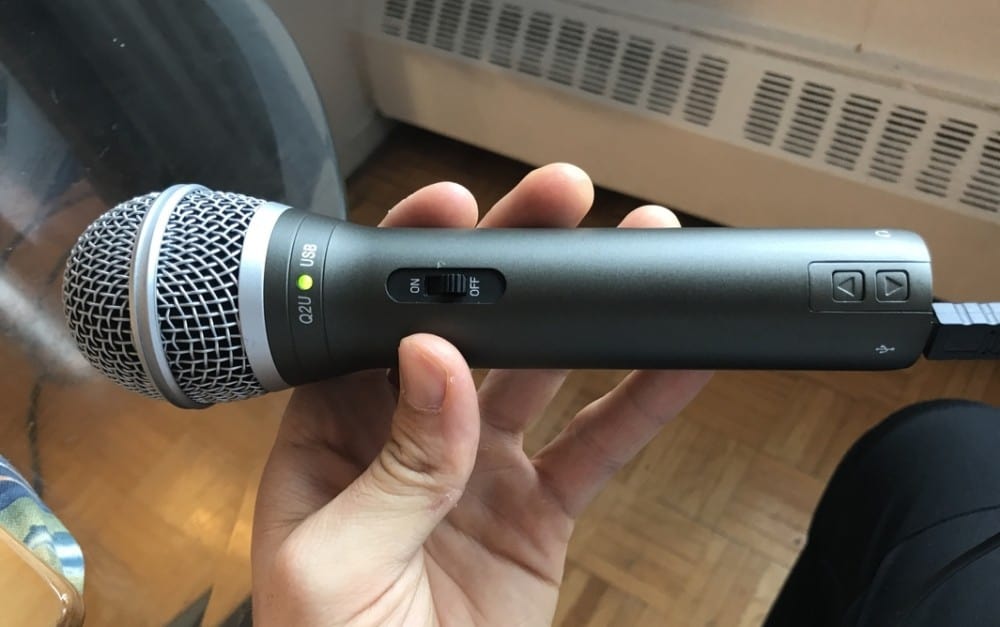
The Samson Q2U is definitely the microphone that I use the most, and the reason for that is that it’s incredibly simple to set up.
All you need to do is plug it directly into your computer, and it works just great from there.
I use it primarily for my YouTube videos because it doesn’t need an audio interface.
Many people have compared it to some of the other much more expensive USB microphones out there, arguing that it has the same value but a lower price.
The greatest features of the Samson Q2U are its multi-capabilities, including the fact it can be used as either a USB microphone or connected via XLR.
Due to its convenience and quality, the Samson Q2U is right up there in terms of one of my favourite purchases over the last few years. It makes recording my YouTube videos a lot easier.
You can read a lot more about it here.
MIDI Keyboards and Drum Pads
AKAI MPK Mini Play Keyboard
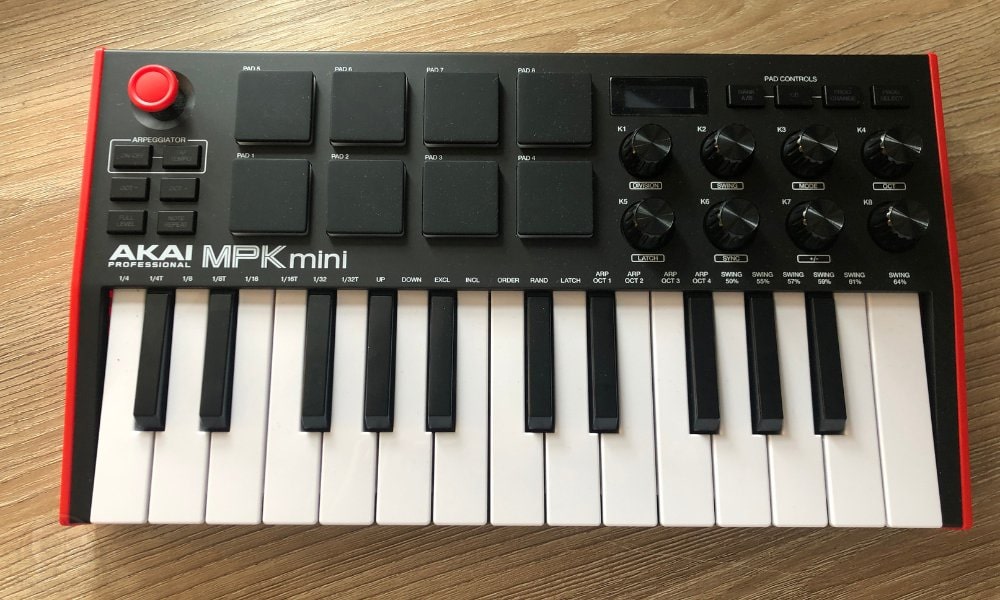
The AKAI MPK Mini is probably the most popular MIDI keyboards on the market. It’s like the Focusrite Scarlett series of MIDI Keyboards, however, I would actually recommend getting the Mini Play instead because it has an in-built speaker and sound library in it.
For just a few dollars extra, you can have a more versatile keyboard. This means you can use it for more creative ideas and practicing purposes. Had I known about it before I got the regular one, I would’ve gotten the Play instead.
Akai MPD 226
The MPD226 from AKAI is a great little assignable drum-pad that doesn’t cost too much money.
It’s fantastic for those of us who love finger-drumming and want a drum-pad that’s customizable, high-quality and packed with a decent amount of options and features.
I already did an entire article about this drum pad, so that’s definitely worth checking out.
AKAI is great at creating products that are attractive to the consumer because many of their products are extremely cool.
They do this by making each piece of equipment very nice to look at, typically coming in the colors black or red.
Moreover, the MPD226 has 16 different pads, with the potential for four banks in each one, and thus, 64 possible sounds, in addition to a bunch of different pre-sets for various DAWs, including Logic Pro X, Cubase, Reason, Pro Tools, and more.
The changing LED lights are incredible as well.
It comes with 4 faders, 4 knobs, Full Level (which increases the velocity to the maximum), Time Division, Note Repeat, and the ability to adjust the gain or sensitivity of the pads.
On the bottom of the unit, there are Transport buttons including Play, Stop, and Record.
It’s also quite easy to set up as well. When I first started using it, I just changed one of the presets at the top-center of the unit, and it immediately began responding to Garageband.
M-Audio Oxygen Pro Series (25, 49, 61, and 88-Key)

The entire series is features 4 keyboards:
- The 25-Key (on Amazon/Thomann/zZounds)
- The 49-Key (on Amazon/Thomann/zZounds)
- The 61-Key (on Amazon/Thomann)
- The Hammer 88 Pro (on Amazon/Thomann/zZounds)
Frankly, the M-Audio Oxygen Pro 25-Key is even better than the AKAI MPK Mini but it also costs a bit more. If you’re in the market for a MIDI keyboard strictly, the Oxygen Pro Series is where it’s at.
Jamstik
I don’t have one of these yet and I don’t know why. I’ve been thinking about it on a daily basis, kinda like the PS5, but I just haven’t gotten around to it. I guess the biggest culprit is the price.
Audio Interfaces
Focusrite Scarlett 2i2 (or 4i4)
The Scarlett 2i2 (on Amazon) is another one of those products that are commonly recommended to people by music producers online, and that’s because it’s a fairly high-quality entry-level audio interface that does the job it’s supposed to.
I’m always harping on the build quality of Focusrite’s products, which are commonly wrapped in an aluminum housing that protects it from daily wear-and-tear. I did a great video on it here.
All of the knobs, faders, and buttons are lit up, and they’re extremely sturdy. They don’t come off as cheap at all; everything is solid and put firmly in place. This is arguably the best feature of the Scarlett 2i2 and other Focusrite products. They’re simply well-made, kind of like the Shure SM58 and Shure SM48.
It has two inputs, a headphone jack, instrument, and line-level switch, a monitoring button to increase the volume, gain controls, and of course, the ability to use a 1/4 jack like what a guitar uses and also an XLR cable.
The newest generation also employs the Air function, which is meant to imitate an old-school preamp from Focusrite.
I’ve written all about this audio interface in my definitive guide to audio interfaces.
iRig HD 2
The iRig HD 2 on zZounds is the go-to audio interface for me because I’m always using it to play the guitar. It’s incredibly small and it sits on the desk nicely without taking up much room.
As I discussed in my video, the greatest drawback of the iRig HD 2, like other products from IK Multimedia, is the fact it’s made out of a finicky plastic, but other than that, their products are always at the top of the line in terms of innovation and function.
The iRig HD 2 has the 1/4″ jack for bass guitars and guitars, and that’s it. It’s meant primarily as an audio interface for bass and guitar players, and that’s what it does the best.
It comes with an LED light to let you know if the signal is too hot or too low, a volume and gain knob, and also an FX and Thru switch, which you can use depending on your set-up.
I wrote all about it here in my article on the iRig HD 2. I think it’s probably one of the best options for guitar players, for sure.
iRig PRO I/O
The iRig Pro I/O PRO from Amazon is like the iRig HD 2, except, it can be used with microphones and other instruments that need an XLR connection. I made a demo of it here.
The construction and build quality are a little bit better, and it’s slightly bigger, but the main differences between these two products from IK Multimedia are the functions, although, the PRO has an XLR Jack
In other words, the iRig Pro I/O is meant for the guitar/bass player who also wants to record vocals on occasion but also likes to go out on the road a lot. Additionally, this device is perfect if you want to take your iPhone and microphone into the closet to record vocals (this is what I do).
On account of its compact size, the iRig Pro I/O PRO is easy to take with you wherever you go, and this is the defining feature of the products from IK Multimedia, especially the iLoud Micro Monitors, the iRig Pro I/O PRO, and the iRig HD 2.
Their quality and sound are comparable to other devices, except, you can take them on the road. IK Multimedia has recognized that the future is mobile in terms of music production gear.
PreSonus AudioBox 96
The Presonus Audiobox USB96, in simple terms, is a super cheap audio interface that does the job for basically nothing. It doesn’t cost a lot of cash at all and it has MIDI IN/OUT ports on the back of it.
If you wanted a Scarlett device with a similar number of features, you would need to buy the Scarlett 4i4 instead of the 2i2. You can check that price on Amazon if you’d like.
SSL 12
The Solid State Logic 12 is a premium audio interface whose price reflects that fact. This device will be the next thing for me to upgrade my studio.
Guitarists and other musicians will spend $3,000 on a guitar or their instrument of choice, but they won’t spend the money necessary to truly upgrade their studio in a way that’ll make a difference.
The SSL 12 is consistently on the “Best Audio Interfaces” list, and what’s nice about it is that it has every single feature I need without costing as much as some of the truly expensive units out there.
Musical Instruments
ESP Eclipse

I’ve had my ESP Eclipse for over ten years and I love this guitar. It sounds great distorted, and clean, and it’s very easy to play because of the jumbo frets on it.
Whenever I get sick of my Epiphone Les Paul Custom (which I also love), I pick up my ESP. I give both of these guitars a fair amount of love and playing time if I’m being totally honest.
ESP is known primarily for being a brand for metal players and that makes sense when you see the design of their instruments, however, I love the way my Eclipse sounds over the neck pick-up with flat-wound strings and no distortion. It sounds great <3
Fender Acoustic
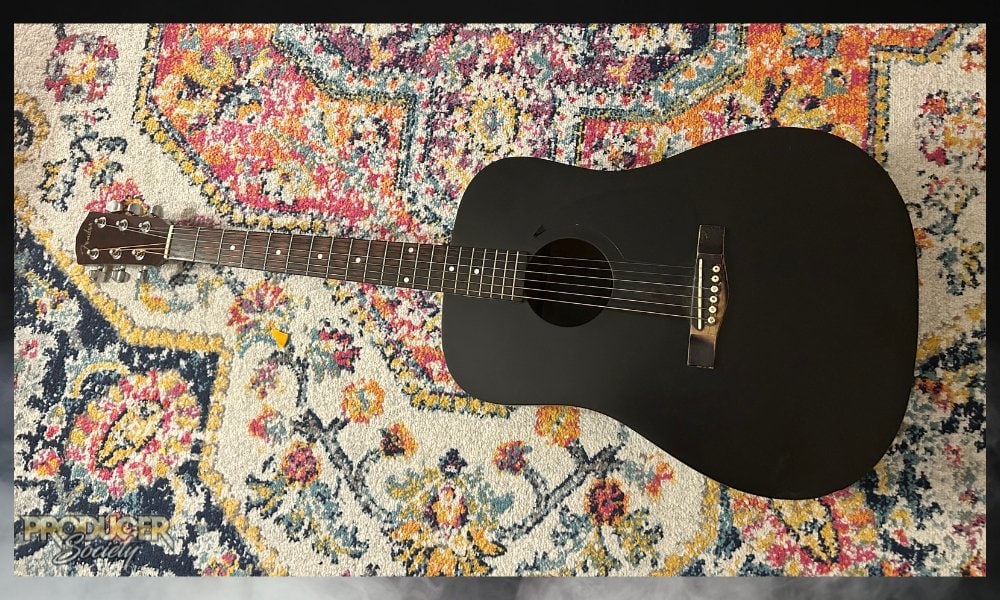
My brother left this guitar behind a long time ago and I inherited it. It’s not a bad acoustic guitar at all for the price. It’s certainly done the job for the decade or so that I’ve had it.
If I were to buy a new acoustic guitar though, I would spend at least $800 to $1,000. The CD-60s is more for beginners than anything.
PRS SE Custom 24
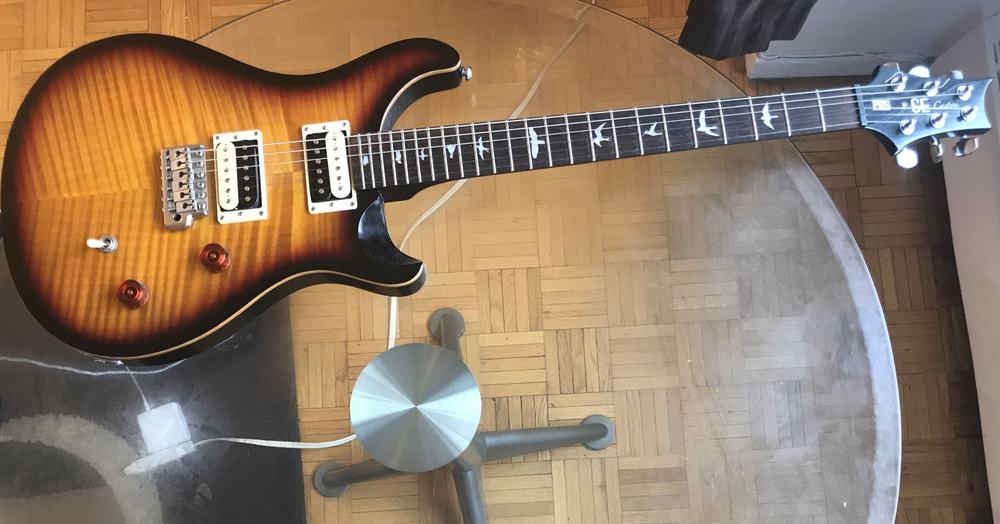
The PRS SE Custom 24 from zZounds, essentially, is the most amount of value you can get for your money when it comes to purchasing a great guitar for a relatively cheap price.
If you look online at other articles, people will often recommend the Fender Stratocaster, the Gibson Les Paul, and the Fender Telecaster, but for the average producer who just wants a great-sounding guitar, the PRS SE Custom 24 is a better option, at least in terms of bang for your buck.
What I like about the PRS SE Custom 24 is that it has the Fender Strat sound, in addition to the tremolo system and 24 frets. The main reason why I bought it is the fact that it has 24 frets, that way I could play – or at least try to play – Wes Hauch’s solo on “Mile Zero” from the band, Periphery.
Either way, I would say that if you get this guitar, you won’t need to purchase a new one ever again, assuming you’re a regular producer who just wants a great instrument to record quick guitar parts. You can read all about the PRS SE Custom 24 in this article here.
Valencia VC404 Nylon String Guitar
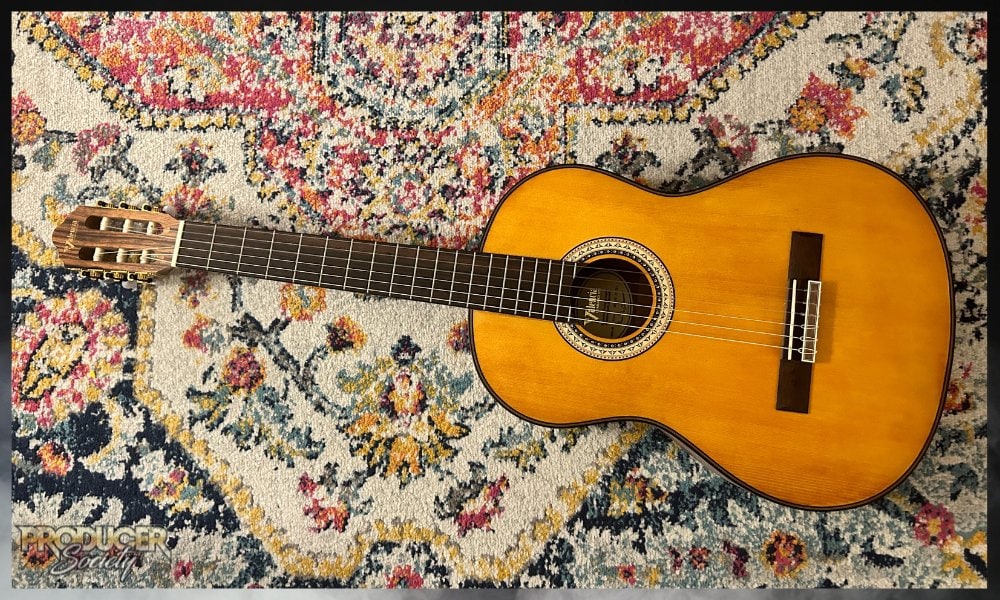
This is a pretty well-built nylon string guitar considering its price. I’m happy I got it. It struggles with tuning stability at times, but that mostly has to do with my apartment, I believe. Other than that, the VC404 is an easy-to-play guitar that’s beautiful and it sounds great.
Home Studio and Office Equipment
Apple Pencil
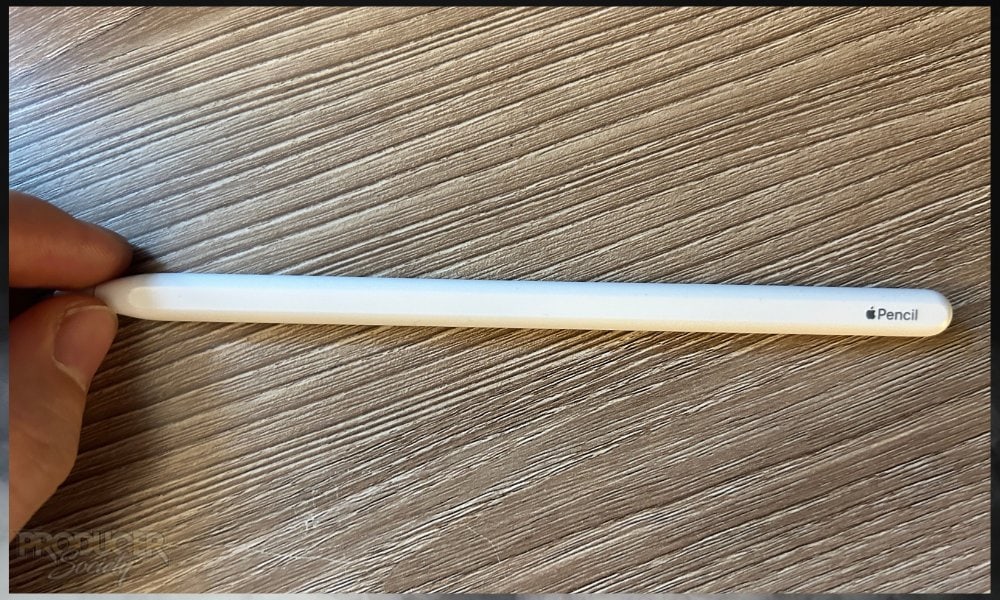
The Apple Pencil is something I bought strictly for Logic Pro for iPad when it came out and I haven’t been disappointed. It makes navigating the workspace much easier and faster. Makes it easier on my shoulder too.
To be frank, I haven’t used it much with the iOS version of GarageBand, but if I had to guess, it probably works great for it as well.
Make sure you get the latest version, the 2nd gen, which allows you to charge it wirelessly by sticking it on your iPad.
Boom Arm
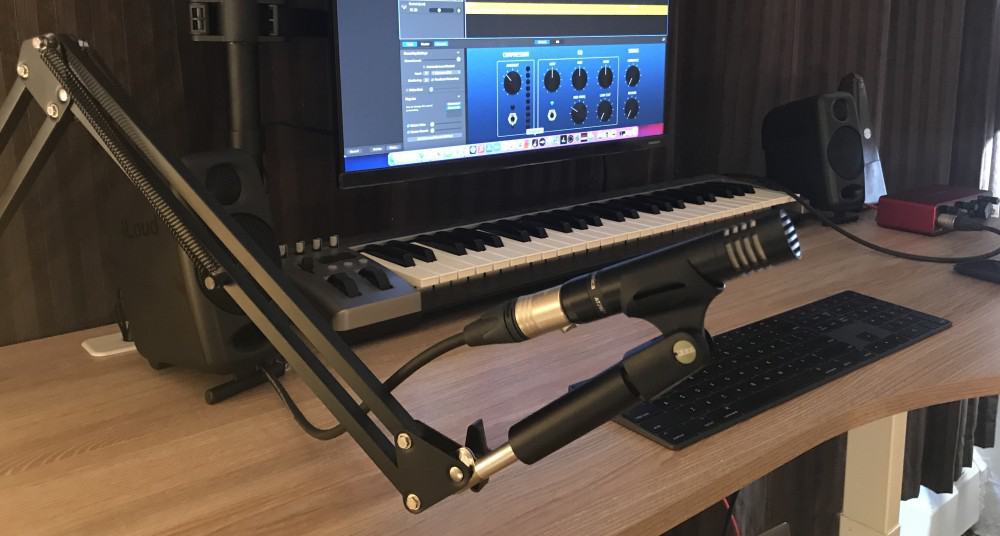
I got the Magic Fun bundle which included a shock mount, a boom arm, a foam guard, and a few other things as well, and it was inexpensive.
Surprisingly, it has held up for years despite the price so I can confidently recommend it. Good luck finding that exact brand though. The link in the image above takes you to several different companies on Amazon.
Desk Light

Like the adjustable boom arm bundle, I’ve had this adjustable desk light for years and it has served me well. It does what it’s supposed to and it’s reliable.
Fiio e10k DAC (Headphone Amp)
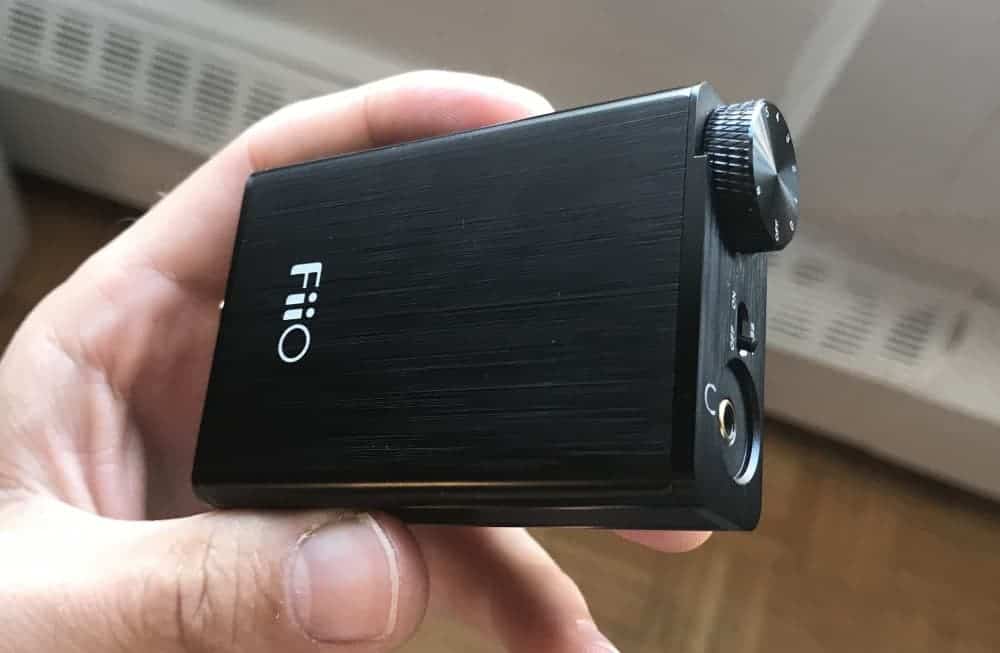
This is an awesome, well-built, and sturdy headphone amplifier but it turns out that I don’t even really need it. This is to drive high-impedance headphones, but if you’re using a quality audio interface, you don’t need it.
If you are interested, however, in a portable headphone amplifier, this one is a great buy.
There are several features on it, including a volume knob, a gain knob, as well as a bass boost option.
What I like to do, is I use the bass-boost option intermittently on the DAC to see how the mix would send on headphones or a speaker system with boosted low-end frequencies.
GEEKOTO Softbox Light

These lights are surprisingly effective despite the price, however, my main gripe was the white light instead of a warmer light. It’s not a high-quality product, but if you need a lighting system without spending much money, this will work fine.
Ivisii G2 RBG Video Light
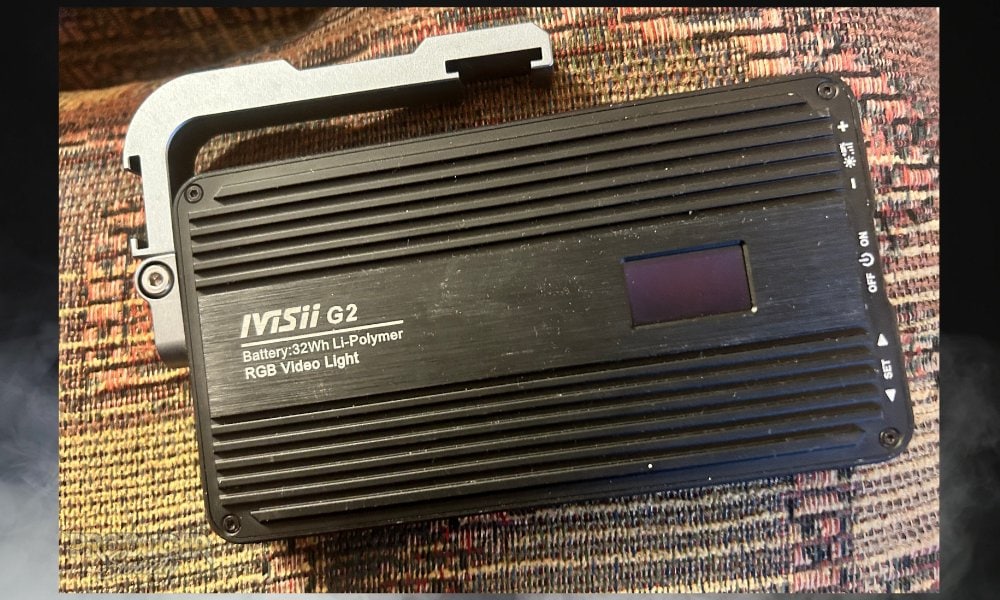
This is another one of those important purchases I’ve made over the last few years. I can’t recommend this little guy enough.
He (she) adds a lot of style to all of my pictures and videos. It’s extremely bright and versatile. It has the best battery life and it’s well-built compared to all of its competitors.
That said, the battery life still isn’t great, so I always leave it plugged in. The fact of the matter is that the battery life on portable lights like these is rarely great. Gets a 10/10 from me dawg.
Philips Hue RGB Lights and GO

In conjunction with my Ivisii G2 light, I’ve got enough lighting to create any kind of colour or background that I would possibly want. I love the set-up, and I’ll probably even grab some more in the future.I also have two GOs (also on Amazon)

Magic Fun Bundle
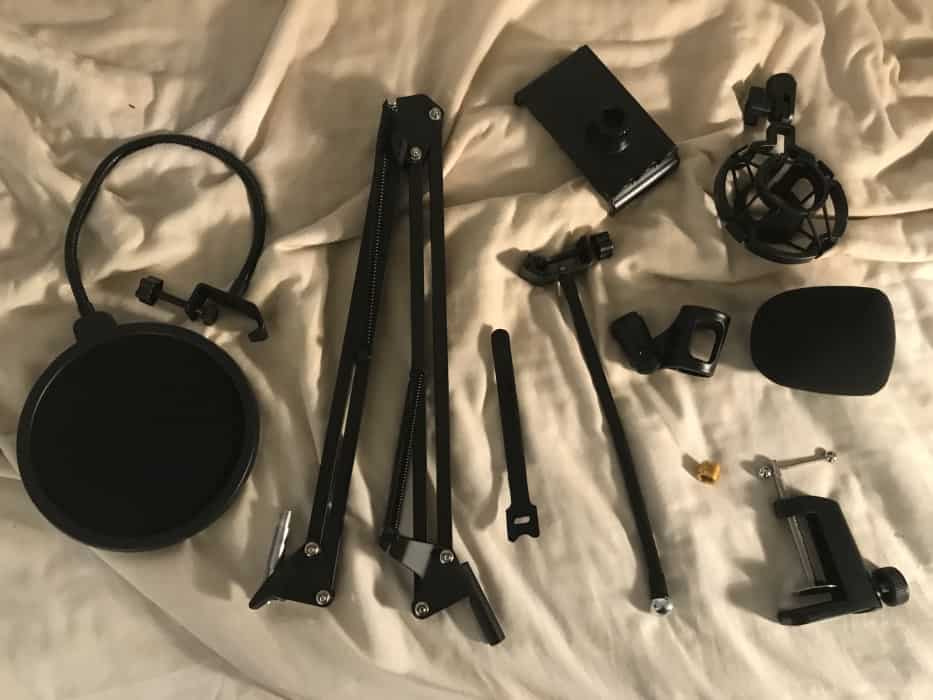
No complaints about this bundle. It’s inexpensive and everything in it works. However, the pop filter broke ages ago and I wound up replacing it with a superior Earamble pop filter (also on Amazon).
MouKey MAMX3 Mixer
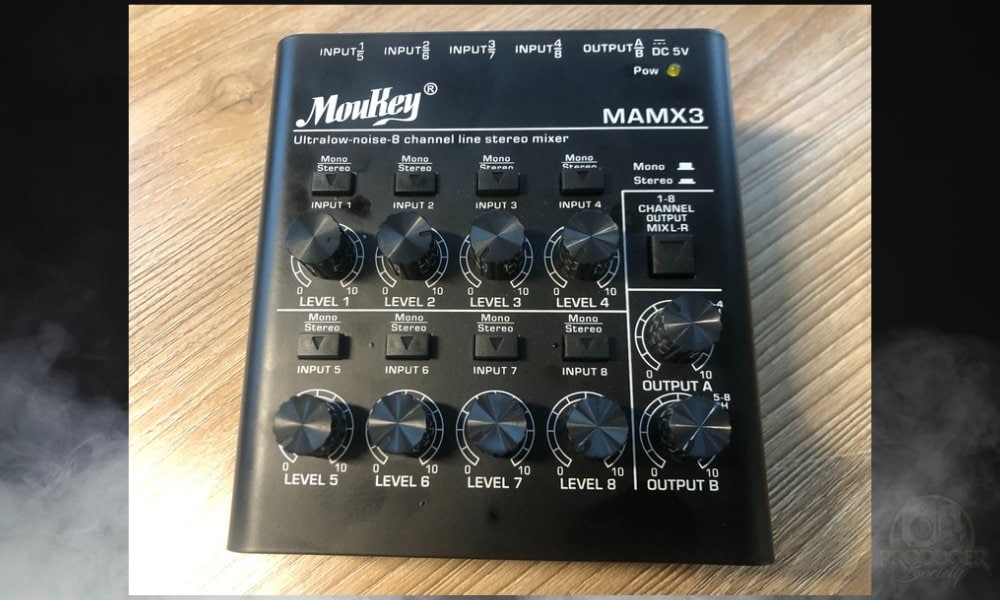
This is another one of those super cheap products that honestly surprised me. It’s well-built and does what it’s supposed to. It doesn’t have AUX or anything like that, but it gives you 8 different mono/stereo channels.
SHW Bureau Adjustable Desk
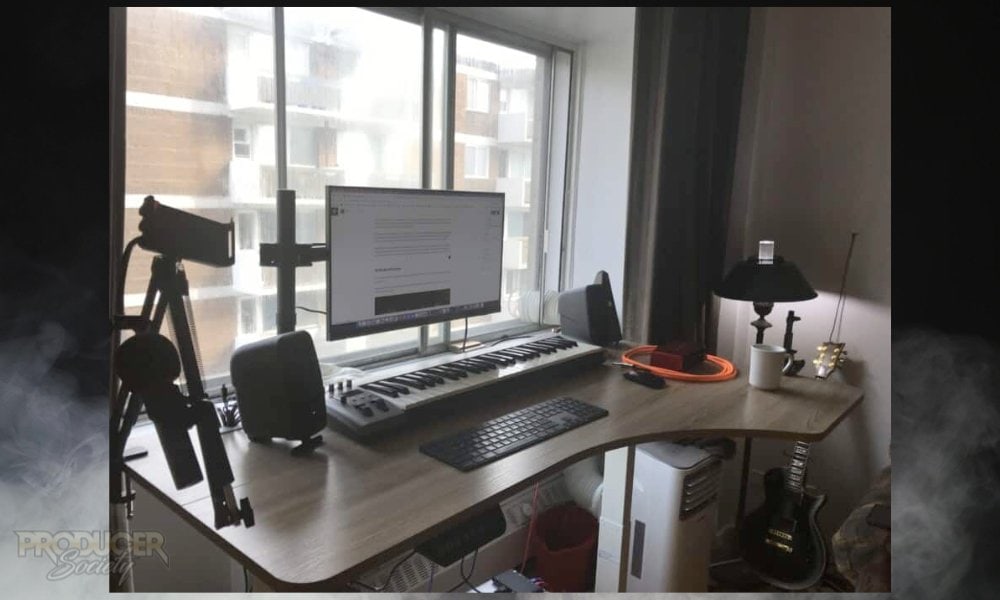
Truth be told, I should’ve had one of these desks years ago, because it does so much for my set-up. The ability to switch from sitting down and standing up is something I use multiple times of day now.
It also has ports built into it so you can feed wires through it, and there are mesh cages that come with it so you can hang wires on it for organization’s sake.
Seagate Backup Plus 1TB
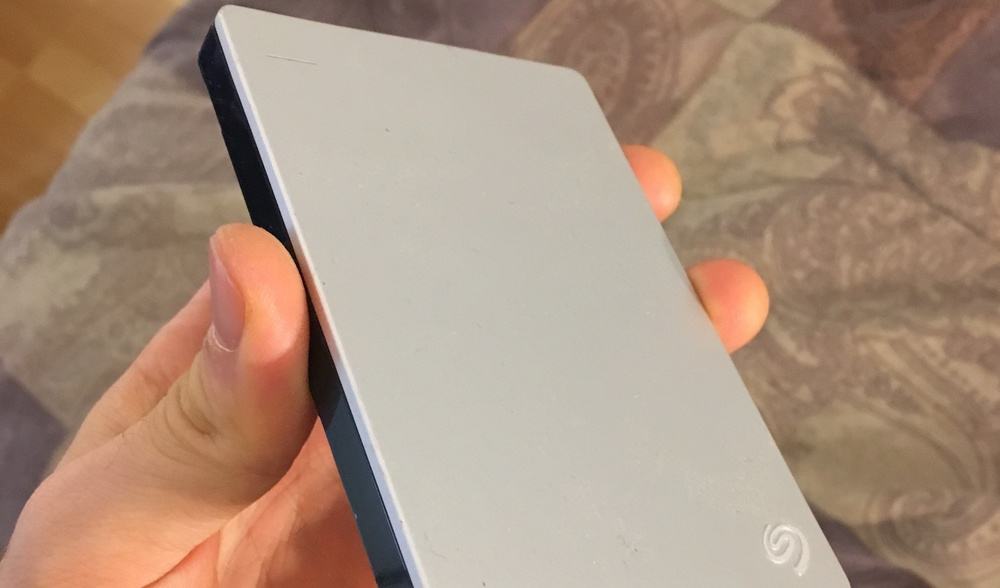
While it might seem like a superfluous product to own, an external hard drive is essential for music producers for several key reasons.
For one, you need an external hard drive to hold some of your much older files that are no longer needed. This has the effect of keeping your computer clean, fast, and optimized for working.
I bought the Seagate Backup Plus 1TB around 3-4 years ago and it hasn’t caused me any problems since then. It’s been incredibly useful for me for the reasons mentioned above.
Not only do I use it for my old music files, but I also use it for YouTube videos, photos, and important documents that don’t need to sit on my computer’s main hard drive.
As I mentioned above, an external hard drive is useful for keeping your computer fast because having a lot of files on it slows it down.
I’ve found it especially useful in the case of YouTube videos, which I make regularly. Each YouTube video is around 1GB, which is a fairly large file.
SSD Samsung 2TB T5
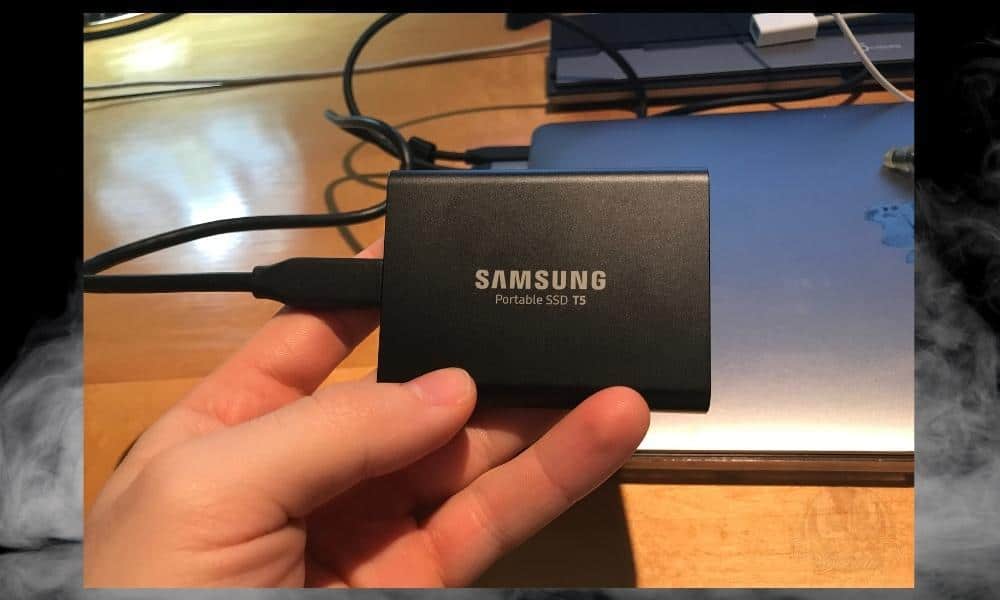
Get the T7 instead of the T5 which I believe is the upgraded version. This SSD is essential for storing VSTs and external sound libraries that I use all of the time.
I also use it for old videos and projects as well. Couldn’t recommend it enough.
Samsung LS27R350FHNXZA Computer Monitor
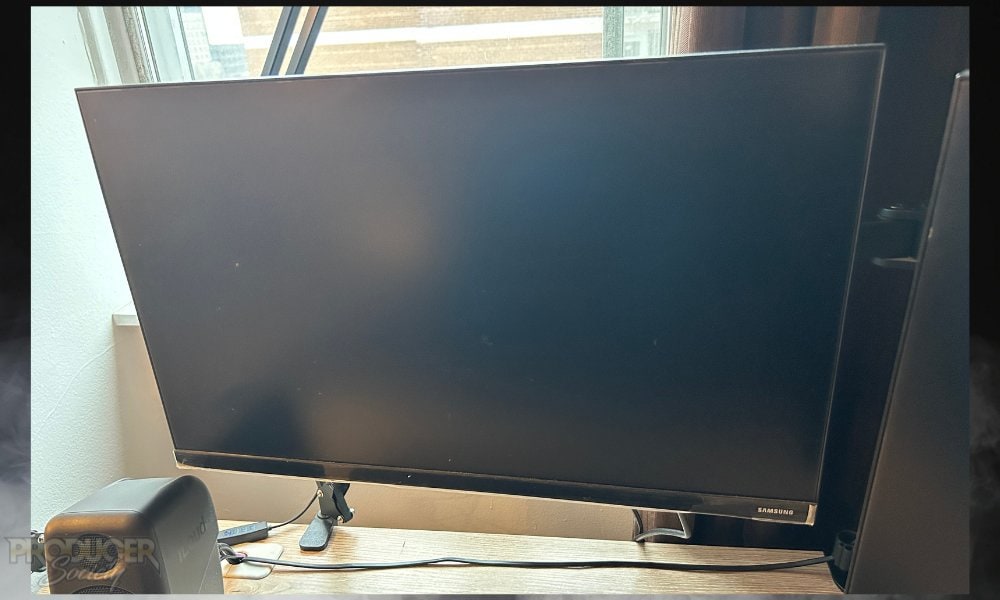
Another part of my setup that I couldn’t do without. I typically have one for my DAW and then the other screen for browsers. I also find it useful for video editing.
I also have the dual monitor stand for both of them, although, I don’t remember which brand. You can find them here.
Software, Plugins, and Sound Libraries
Amplitube 5

If you’re a guitarist and you want almost every kind of guitar amp ever made on your PC, Amplitube 5 MAX is great. It’s not even that much money, assuming you get it when it goes on sale, ie, Christmas, Black Friday, etc.
I’ll always use analogue, but I’m not afraid of owning stuff like this either It’s just too useful when you’re in a pinch and you need a particular sound.
Ample Guitars
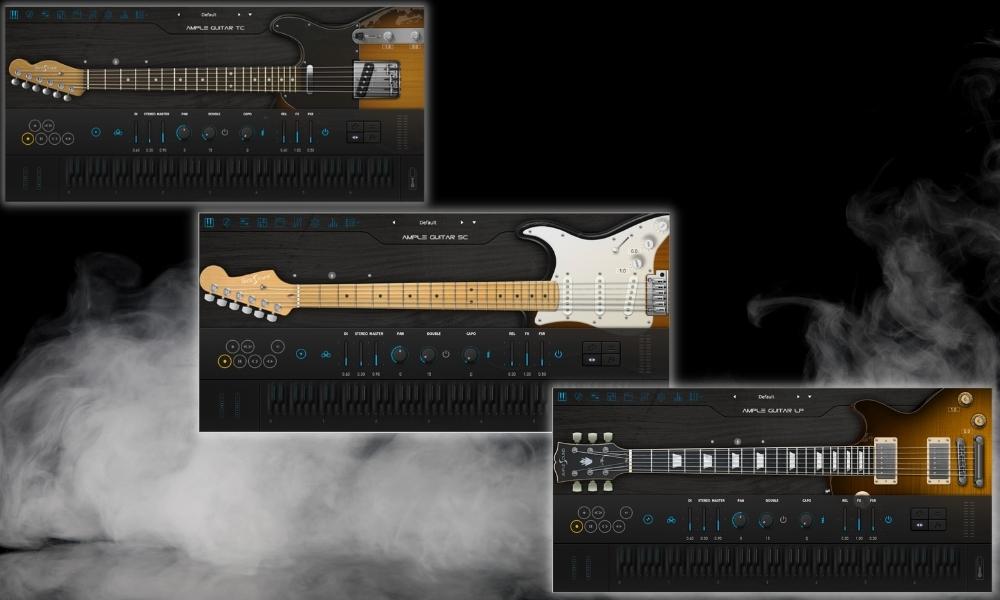
Ample Guitars are guitar VSTs that actually sound good. I don’t use them often because I play the guitar, but these are awesome if you don’t play guitar but you want the sound.
Antares Auto-Tune Pro
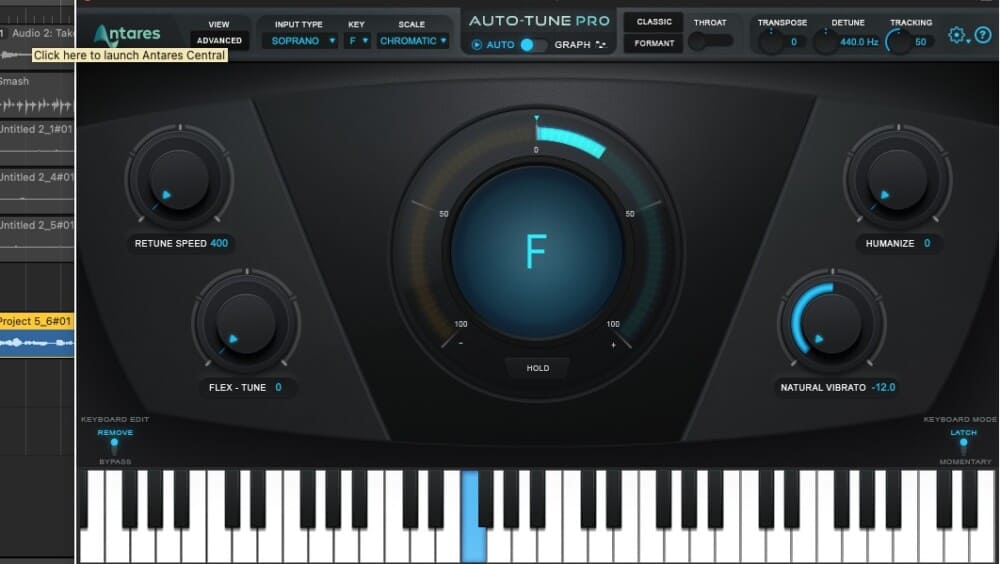
I prefer Melodyne, but the thing about Melodyne is that it’s more of a pitch correction tool than AutoTune. AutoTune is a tool that can be used for both pitch correction and as an effect.
There’s a reason to have both of them, but I only have Melodyne Editor at the moment.
EZ Drummer 3
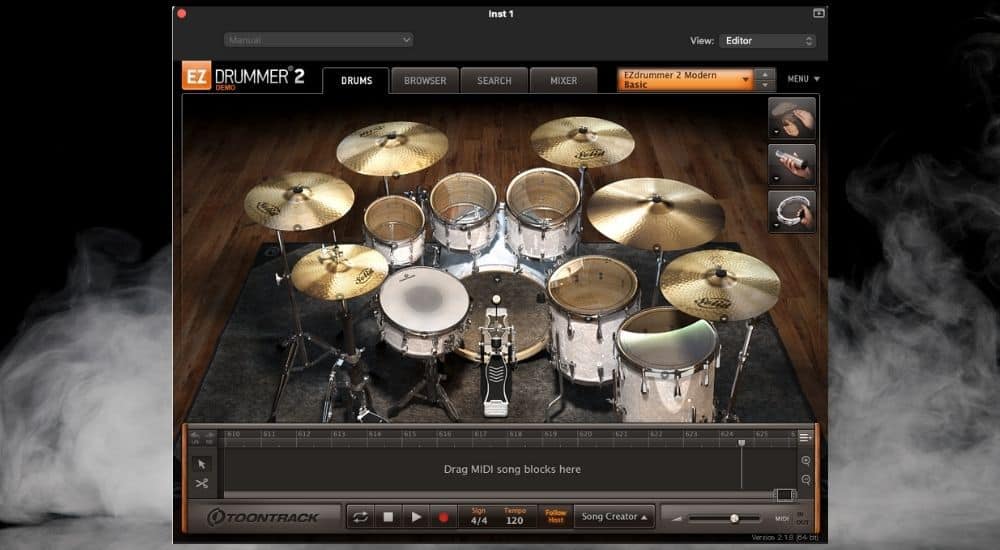
EZ Drummer is like GarageBand’s Drummer Track but on steroids. And Superior Drummer is like EZ Drummer 3 on steroids. It’s a cool way to get some drum sounds in your project.
Bob Perry Noise Gate

The BPA Noise Gate is a seriously good noise gate considering what it costs: nothing. I’ve used it in several tutorials including in my Noise Gate YouTube video. Couldn’t recommend it enough.
BlueCat Audio’s Axe Pack (Axiom, Destructor, and Hot Tuna)

Ever since I got Blue Cat Audio’s Axe Pack I’ve been straight-up obsessed with it. For the guitarist community, it’s in vogue to talk badly about amplifier simulators and modellers which is just silly.
Products like this allow for people without a lot of space or money to create great-sounding music without bothering their neighbours.
In my apartment, for example, I have a half-stack mic’d up with a Shure SM57 but when I don’t feel like entertaining people on my floor, I almost exclusively use Blue Cat Audio amplifier simulators.
Another great feature of the Destructor (a distortion processor) and Axiom (the amp modeller) is that you get a ton of presets to try out.
I’m not the type of guitar player that loves to tinker and adjust knobs. I just like to dial in a preset and then start playing and the presets on this thing sound great right out of the box which is perfect for me. I couldn’t recommend the Axiom, Destructor, and Hot Tuna enough.
And that’s another thing worth mentioning by the way. The Hot Tuna is super handy when you want to tune up your guitar without having to use a headstock tuner or grab one from the shelf.
If you’re anything like me, you always forget to tune before you sit down with the guitar, so the Hot Tuna is great (it’s also chromatic).
Drum Pro
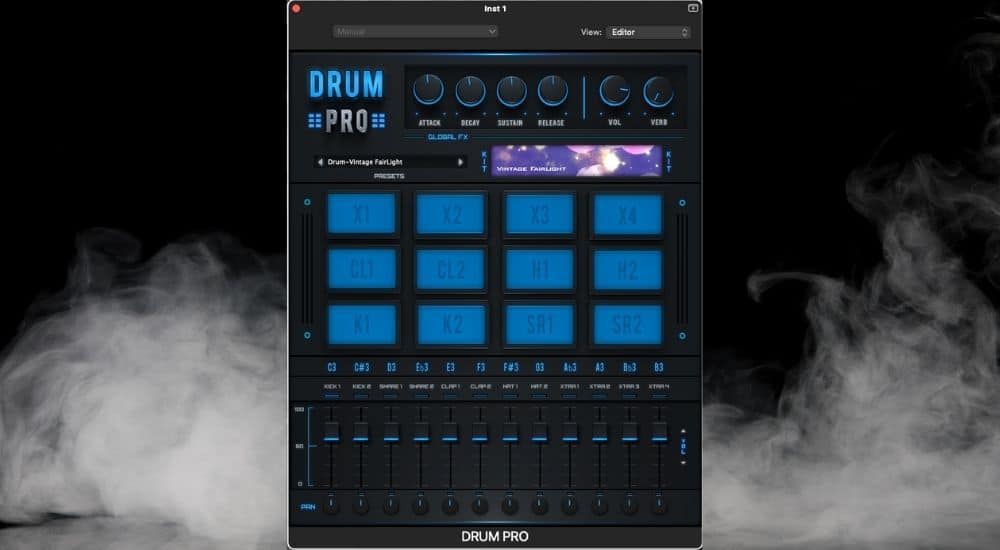
The Drum Pro plugin is an awesome-sounding plugin, however, it doesn’t work properly with GarageBand anymore which is a real shame. I loved using it, and I wish it would get an update.
For whatever reason, it crashes whenever I load certain drum kits. I’m still holding out hope it’ll work properly again sometime in the future.
FL Studio 21 Producer Bundle

I have the Producer version of FL Studio. I’ll probably get the All Plugins edition someday because frankly, the Producer Edition is a bit limited. The Fruity one must have nothing. If you are going to get one, start with the Producer Edition at least.
Files (App from the App Store)
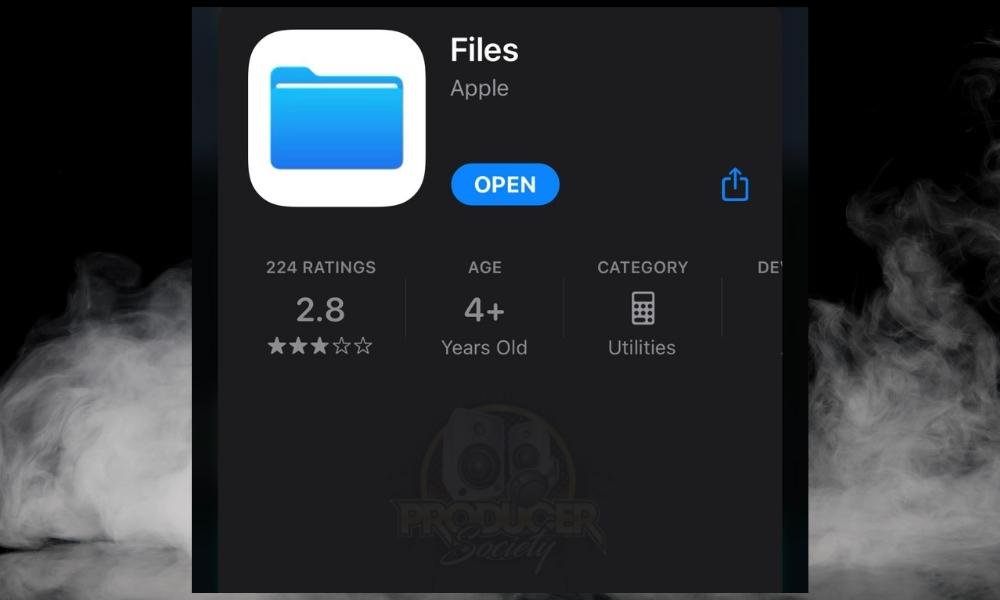
If you’re using an iOS device, the Files app is a must. There’s no other way of going about it. You need a way to organize your local files, downloads, and iCloud Files.
Fab Filter’s Mastering Suite (Pro-Q 3, Pro-C 2, Pro-L 2, Pro MB)

Fab Filter’s Pro-Q 3 EQ is probably the most popular EQ plugin on the market and it makes sense why people are always talking about it after you’ve tried it.
The moment you crack it open, its quality is obvious. Just the way that everything moves around on the screen and the way the interface looks – it screams “top-notch.”
The Pro-Q EQ’s selling point though is not only its interface but the fact you can solo certain frequencies to see how they sound on their own.
This takes the mystery out of EQ because you can isolate whatever frequency band you want.
Guitar Pro 8

This is another one of those essential purchases that I’ve made over the last couple of years that I couldn’t recommend enough (for guitar players). Once I purchased Guitar Pro 7.5 for my desktop, I knew I had to have the mobile version as well.
I’m not even sure what to say about it other than the fact that if you’re a guitar player and you don’t own Guitar Pro, then you’re missing out – plain and simple. It makes learning new songs and practicing exercises just so much easier, and the fact that you can also use it on your phone makes it even better.
Guitar Rig Pro 7
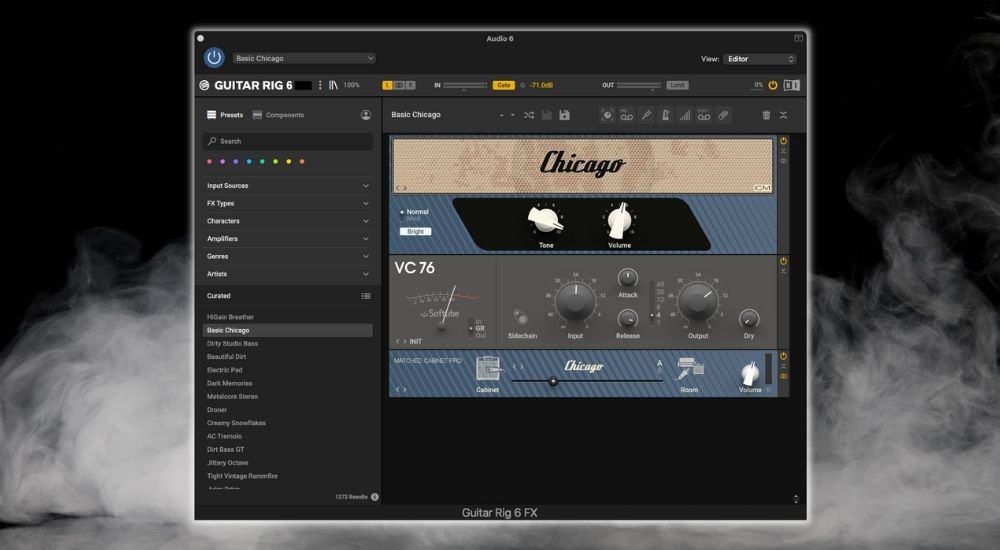
I like Guitar Rig 7 PRO a lot and the reason is simple: it’s awesome for FX. You can make all kinds of insane sounds and effects with Guitar Rig Pro.
While Blue Cat Audio Axiom and Amplitube 5 are more for amps (although the Axiom is great for FX too), Guitar Rig Pro 7 is for people who want to get really experimental and creative.
Komplete 13 from Native Instruments

Native Instruments has one of the best reputations in the game when it comes to things like VSTs and sample libraries. You really can’t go wrong if you’ve purchased a library of instruments and sounds from them and Komplete 14 is no different.
As we all know, there is no limit to the amount of gear that you can buy, but Komplete 14 is all you need if I’m being completely honest, at least when it comes to VSTs and sounds.
Komplete Start
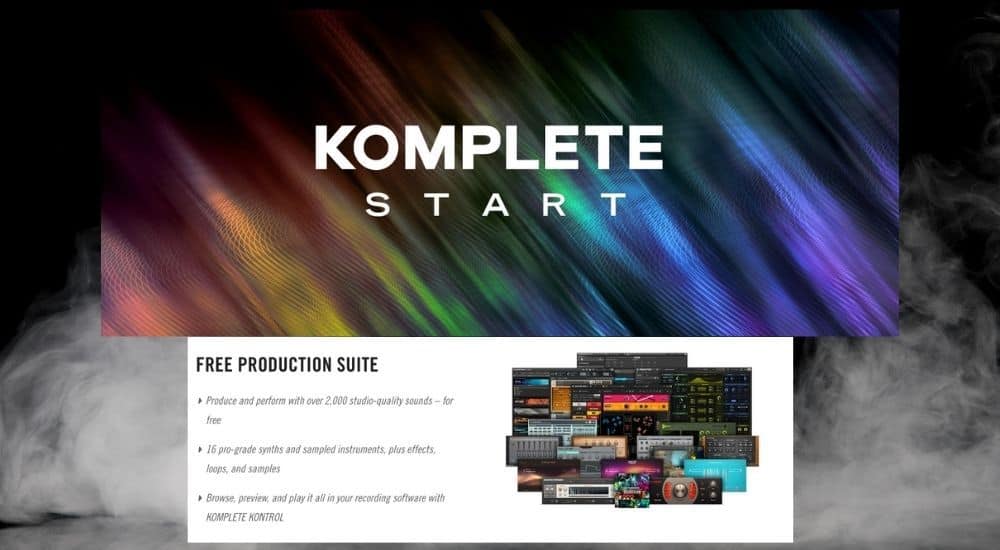
Komplete Start is Native Instruments’ free bundle that’s designed to get you to step into their world of software, VSTs, and sample libraries. I couldn’t recommend downloading it enough. What you get for free is awesome.
Initial Audio’s 808 Studio II
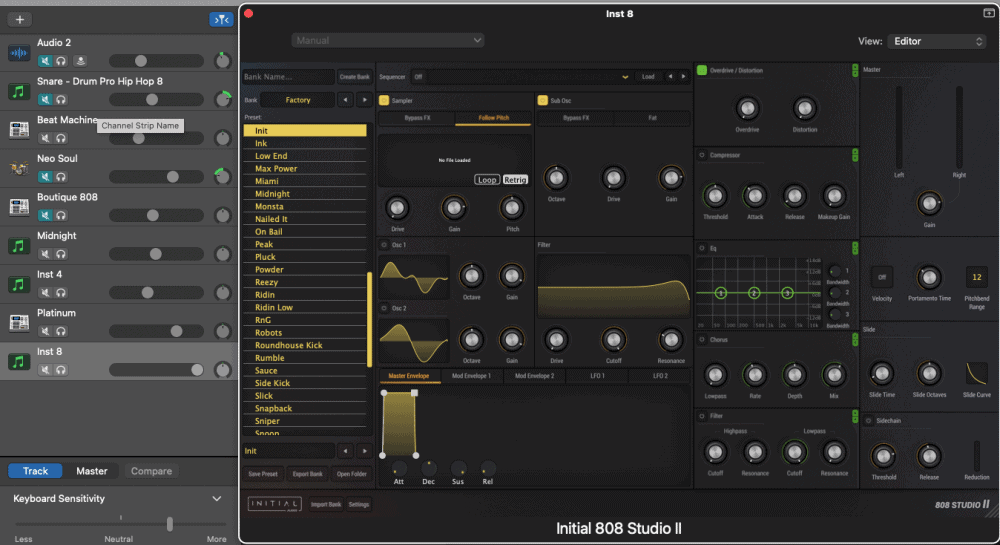
At one point in time, Garageband didn’t have much in terms of 808s and bass but that has changed. After their last update, we got new bass synths and 808 instruments but even though that’s now the case, the 808 Studio II synth from Initial Audio is still an essential VST in my opinion.
This is my 808 instrument of choice for Garageband because of its many great-sounding presets and also the built-in sampler. I’ve stated before in my sampling guide that Garageband’s sampler isn’t the best for 808s but the 808 Studio II makes up for that. It’s not expensive either so that’s a bonus.
iMazing
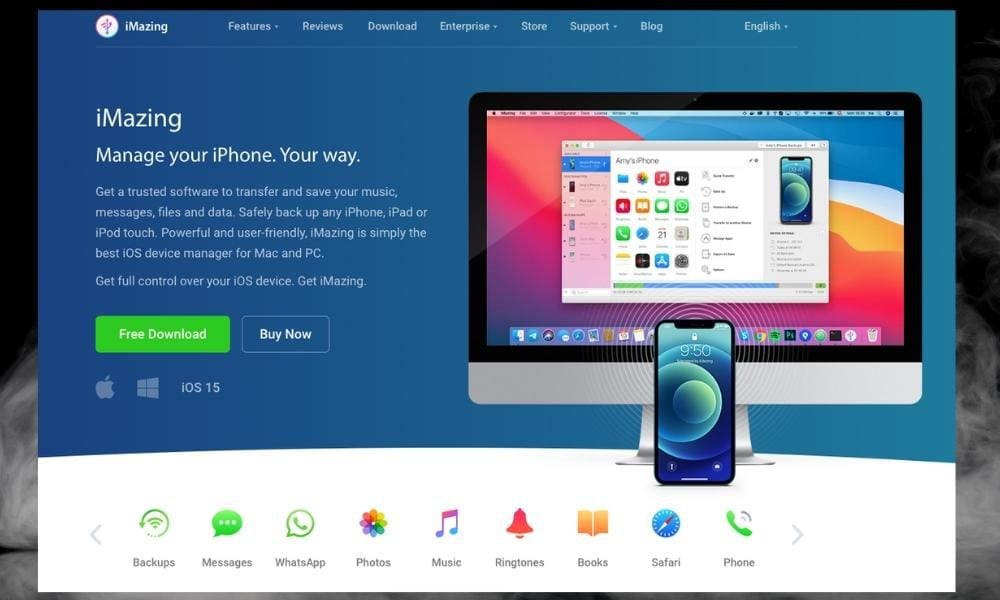
iMazing is the answer to the changes that have been made recently to iTunes. I don’t know if you remember, but iTunes used to be the tool that we all used to add and delete things from the iPhone.
It worked well as not only a way to manage our devices but it was also amazing as a music player. These days, not so much. iMazing is a great way to manage your device, and your ringtones as well. The ringtones management is a big selling point for a lot of people, surprisingly.
iZotope’s RX10 Background Noise Remover
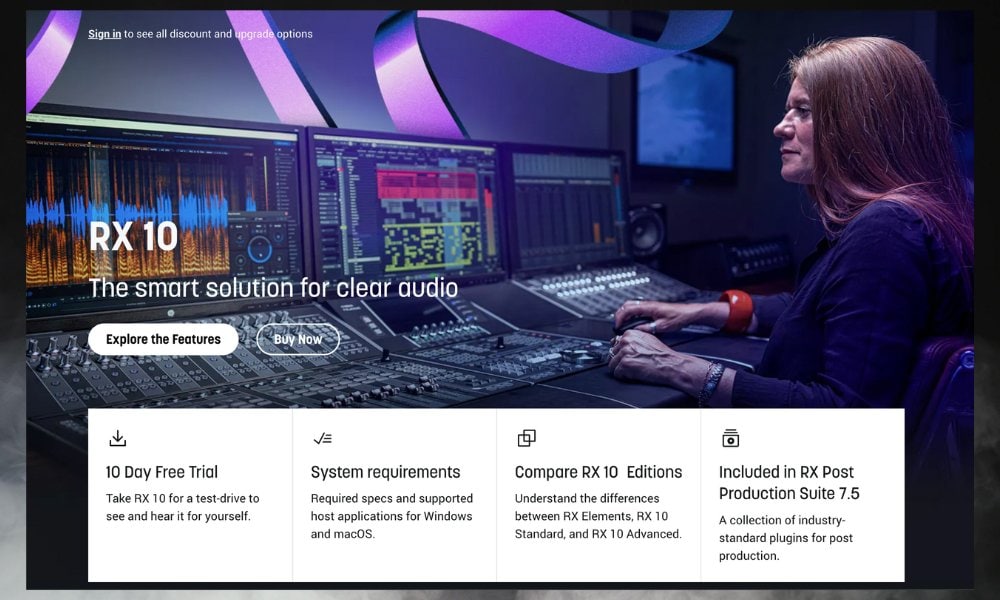
I don’t own this and I’ve never used it, but someone whom I respect told me it was an amazing tool for removing background noise. And it should be, considering how much it costs.
I don’t think there will be any reason for me to use this anytime soon, however, if you’re serious about audio restoration, the RX10 is probably a good choice for you.
Loopback Audio from Rogue Amoeba

Loopback Audio, in simple terms, is a tool that gives you total control over how sound is transferred between devices and applications on your Mac product.
Melodyne 5
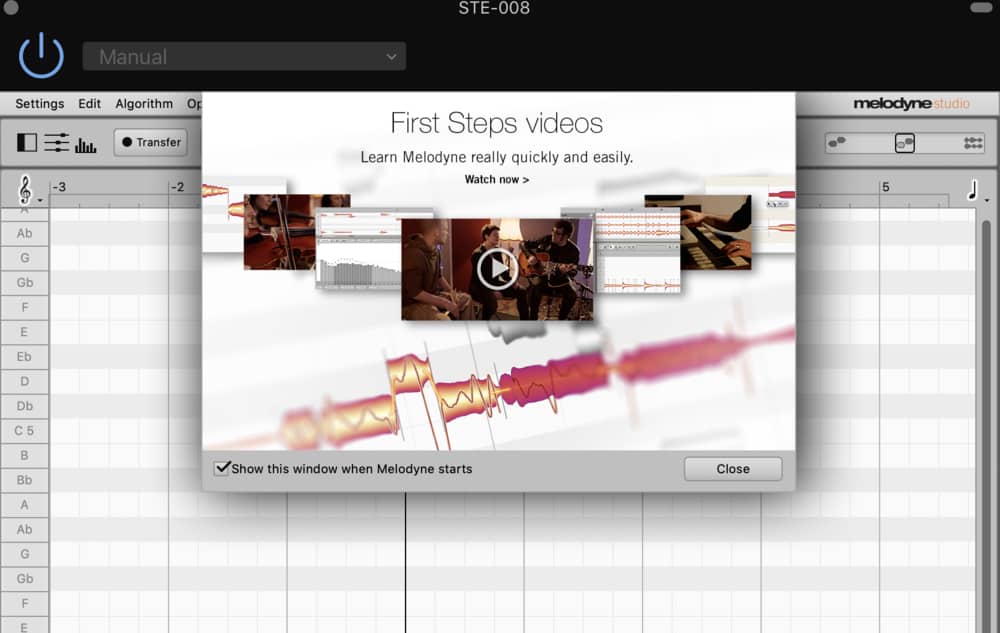
Melodyne is one of the most popular audio editing tools on the market, especially for music producers, and it’s easy to see why.
While I haven’t tried the newest version, Melodyne 5, I’ve used Melodyne 4 in the past and it’s fantastic.
Perhaps the greatest feature of Melodyne is the fact that you can make changes to your music, including the pitch, in such a way that it retains its natural human quality.
I won’t touch on every feature of Melodyne here, but the number of things you can do it with it, make it an incredible purchase if you’re in the business of music production.
One of the more impressive features that I noticed about it is the way that you can edit polyphonic sounds, for instance, the notes of a chord.
If you’ve recorded an acoustic guitar playing chords, you can actually go into the audio file and adjust each note individually if you need to. It’s really quite amazing.
Moreover, you can even adjust the amount of vibrato within a singer’s voice, down to the minute detail.
It’s definitely worth checking out.
You can either grab the essential version, assistant, editor, or the studio. I would recommend getting the assistant version because that’s what offers the most amount of value for the price.
Melda Production’s MFreeFXBundle
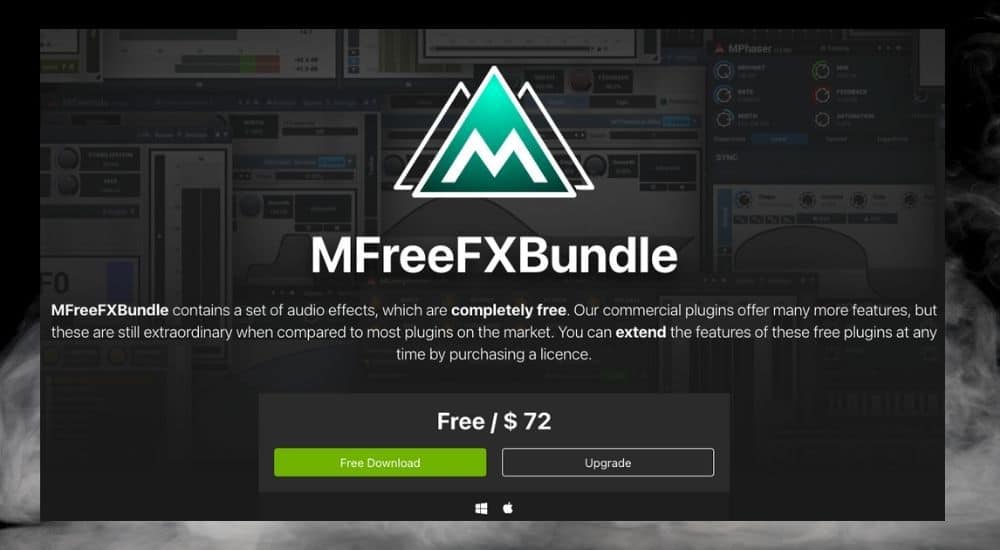
In simple terms, the MFreeFXBundle is a huge amount of plugins that you can get for free. It’s similar to Native Instruments’ Komplete Start, although, different in terms of the kinds of plugins you get.
I think it’s a great steal for GarageBand users because all the plugins work fine for it, and they open up possibilities in terms of what you can do with GarageBand, effectively reducing its limitations.
MAutoPitch from Melda Productions
If you need a free autotune plugin, the MAutoPitch is what you should use – plain and simple. It works well and it doesn’t cost anything.
Screenflow Editor
The ScreenFlow Editor is what I use as my primary editor, and it’s what I’ve used for years. If I’m on iPad, I’ll use Final Cut Pro, but by and large, the ScreenFlow Editor is my main one.
It works well and I have no complaints. I just need a new computer that has the power to use it.
Sitala Drum Sampler (GarageBand iOS)
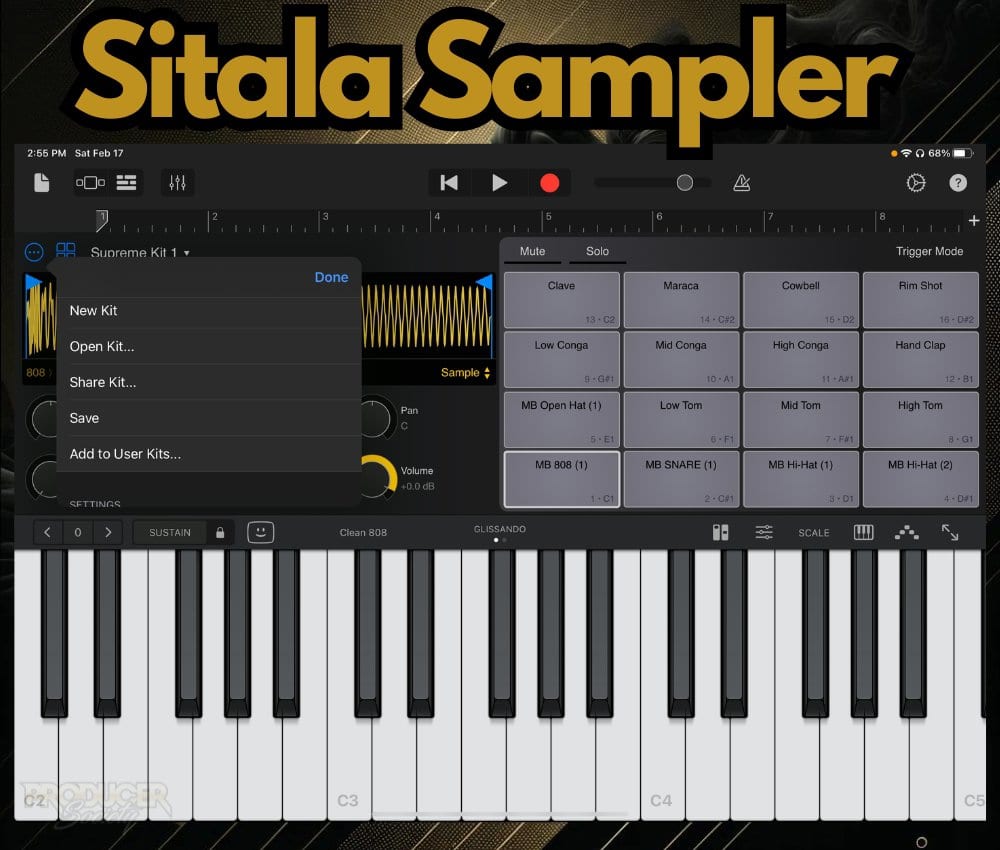
I hate using the GarageBand iOS Sampler mostly for its inability to load audio files in a way that’s efficient and convenient.
The Sitala Sampler solves this problem, and it also gives you MPC pads right on the main interface. You can load whatever sample you’d like right here on the drum pads.
Additionally, it comes with some solid drum kits of its own and you’ll have the ability to save however many drum kits you would like as presets, to be easily recalled and used whenever you want.
It cost me around $12.99CA and was 100% worth it.
Spitfire Audio LABS’ (All the Sample Packs)

I love Spitfire Audio Labs and I think a lot of other people like it too. The sounds are all high quality. For instance, the cello is SICK. I’ve used it on several projects.
The Moon Guitar, Bass Guitar, Mandolin, and Drum Kit are all great too And it’s free to use.
Superior Drummer
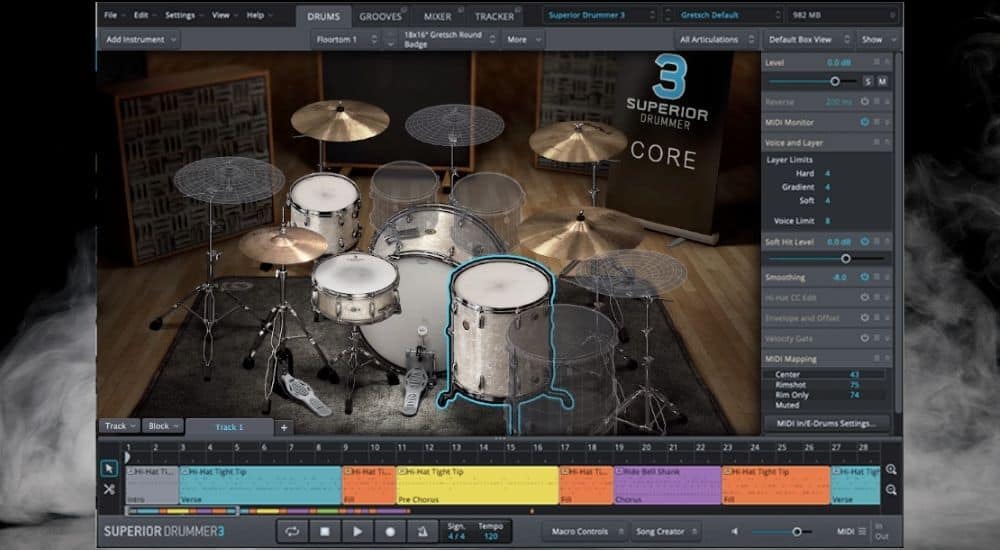
Superior Drummer is like the industry standard for drum programming. The library you get is hundreds of GBs and it can do everything and every kind of genre. Unfortunately, I haven’t used it yet, but it has been on my wish list for a hot minute.
Sample (Chrome Extension)
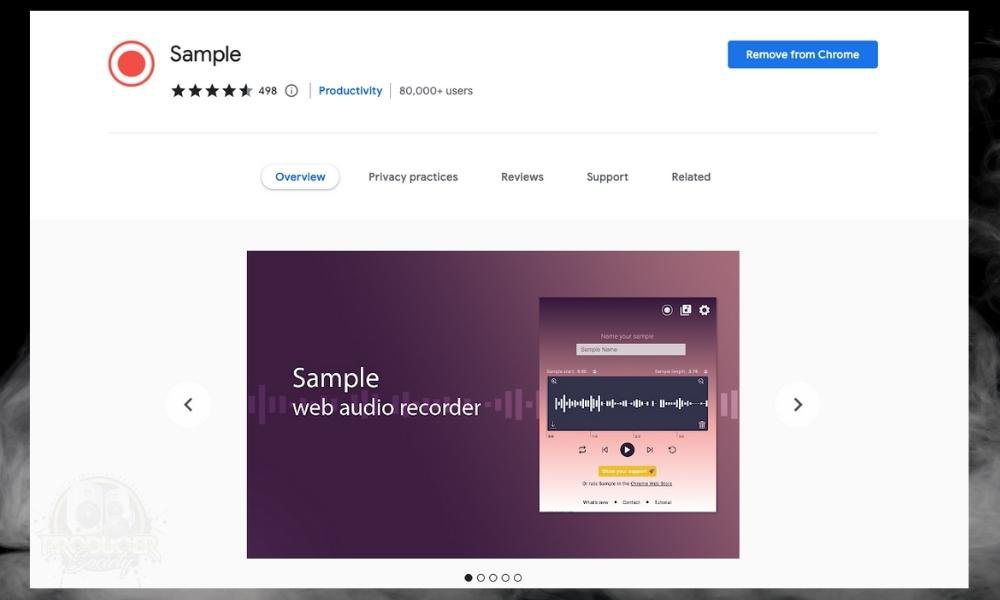
I love using this tool. And it costs nothing. It’s truly one of the greatest things I’ve used in a long time because you can sample anything and everything online. It rules. 10/10.
YouLean Loudness Metering Tool
The YouLean Loudness Meter is another awesome free tool. I use this over the free one that comes with the MFreeFXBundle I mentioned earlier. The YouLean is my loudness meter of choice, and it works great. No complaints.
XPand!2
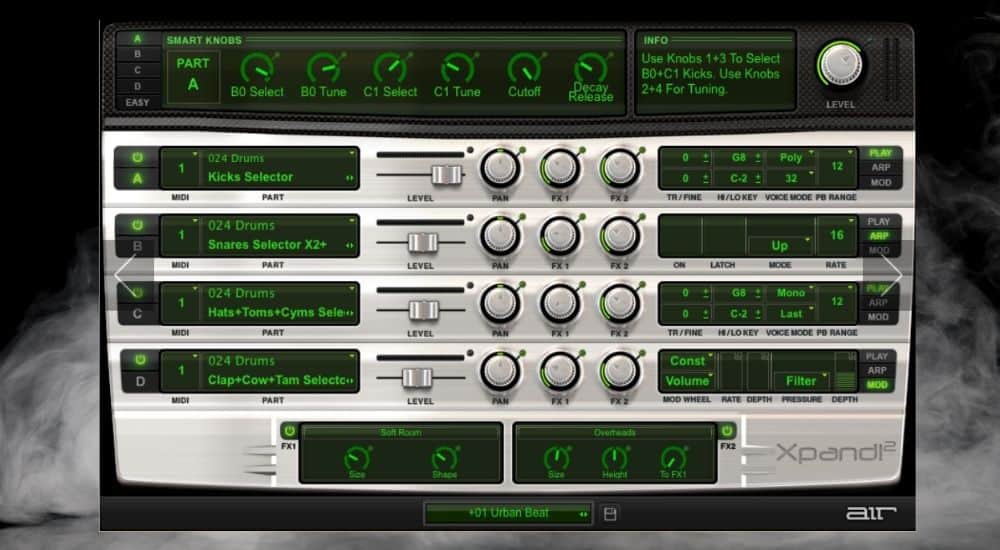
Xpand! 2 is one of the best ways to spend money as a producer. It usually costs almost nothing (especially when it’s on sale), and it comes with all kinds of great sounds. It also works just fine in GarageBand.
Books And Learning Material
Alfred’s Basic Adult Piano Course Lesson Book – Level 1 & 2
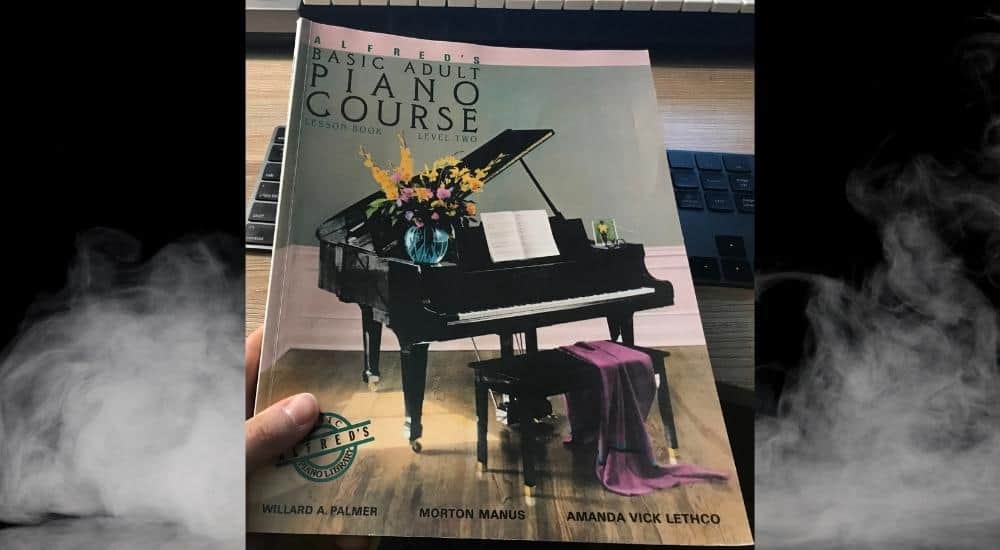
If you’re not interested in using Pianoforall, this is a good book. I get it that sometimes it’s nice to step back into the analogue world.
Audio Engineering 101 From Timothy Dittmar
This is a great book that walks you through the basics of audio engineering.
If you’ve ever been confused by some of the more basic terms, such as attenuation, or parallel compression, or even just the rudimentary gear on the market, Audio Engineering 101 explains everything in a simple way.
I’ve read this book more than once at this point because I’ve found it exceptionally helpful for those of us who aren’t educated in this field.
Put simply, this is the book that you want to get if you’re new to audio engineering and music production.
In Audio Engineering 101, Tim Dittmar touches on the foundation of music production and engineering, including the explanation of sound, EQ, frequencies, people skills, mixing consoles, dynamics processors, signal flow, employment in the business, and a FAQ section with professionals.
Drums for Dummies by Jeff Strong
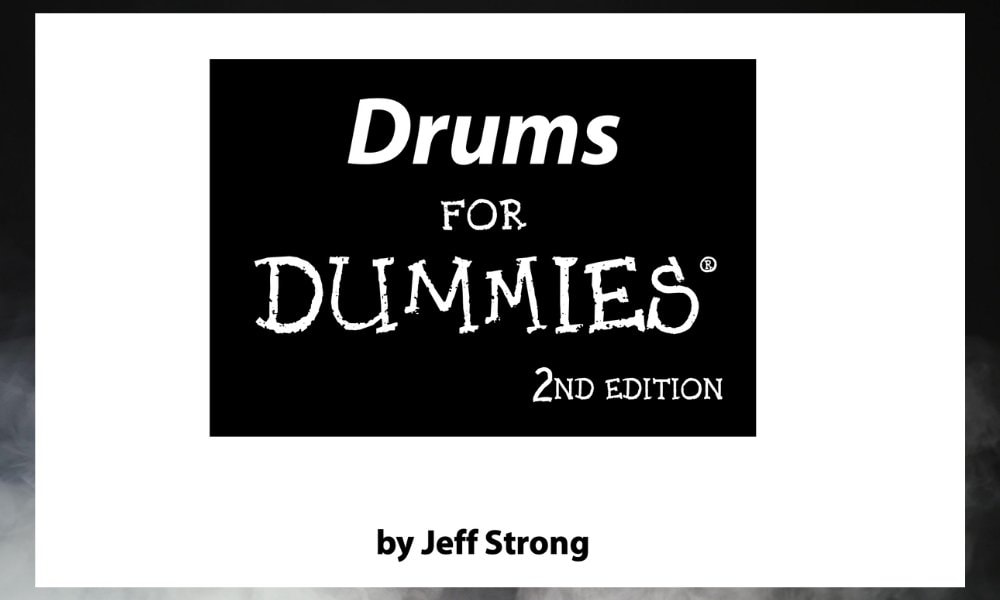
This is a great book on the drums that I should probably go through again at some point. It teaches you all about rhythms including some of the most popular patterns. It’s a good way to familiarize yourself with the basics of drum programming.
The book isn’t about programming, but it’ll give you a good idea of how to go about creating your drum patterns from scratch if that’s what you’re into.
Jazz Chord Mastery by Joseph Alexander
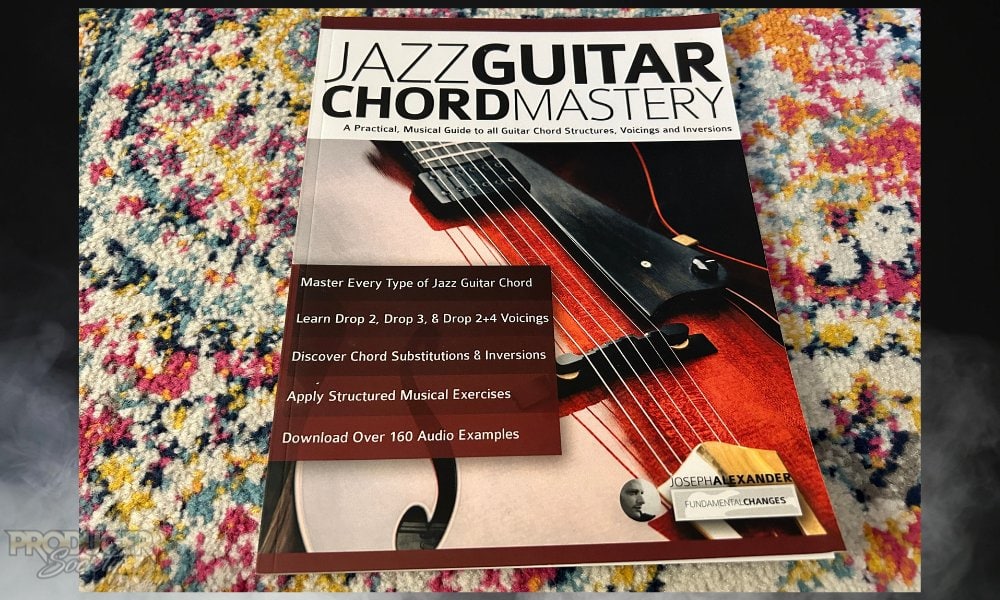
This is a pretty cool book if you want to learn about chords.
Legal Aspects of the Music Industry by Richard Schulenberg
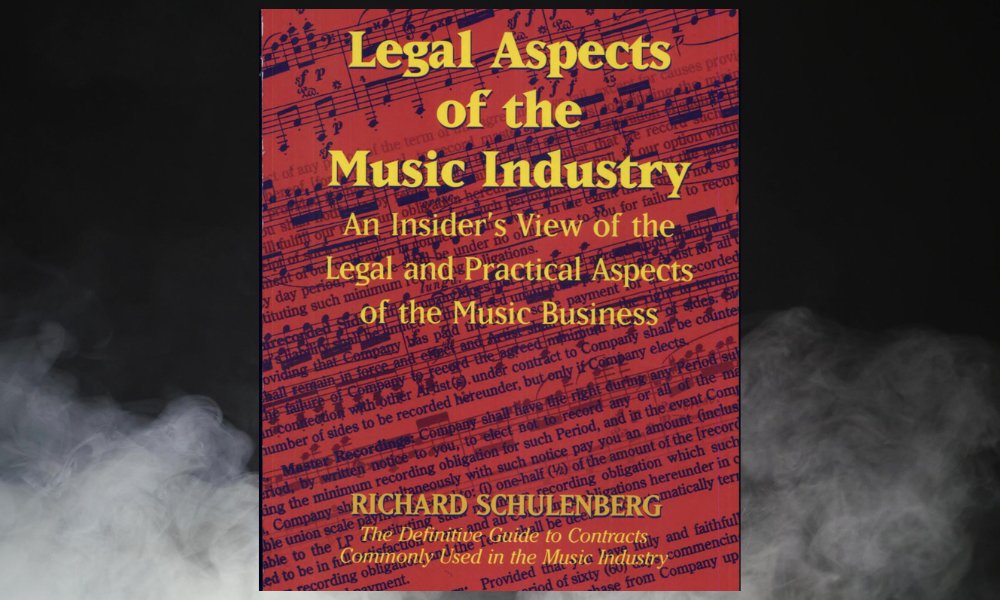
An outdated but useful book if you’re interested in learning about the legal side of the music industry. I learned a lot from this book, however, it’s a challenging read.
Jazz Theory Book by Mark Levine

Mark’s Jazz Theory was recommended to me by one of my favourite guitarists and it didn’t disappoint. This is an awesome book for people who are eager to learn everything there is to know.
Mark Sarnecki’s ‘The Complete Elementary Music Rudiments’ + Answer Book
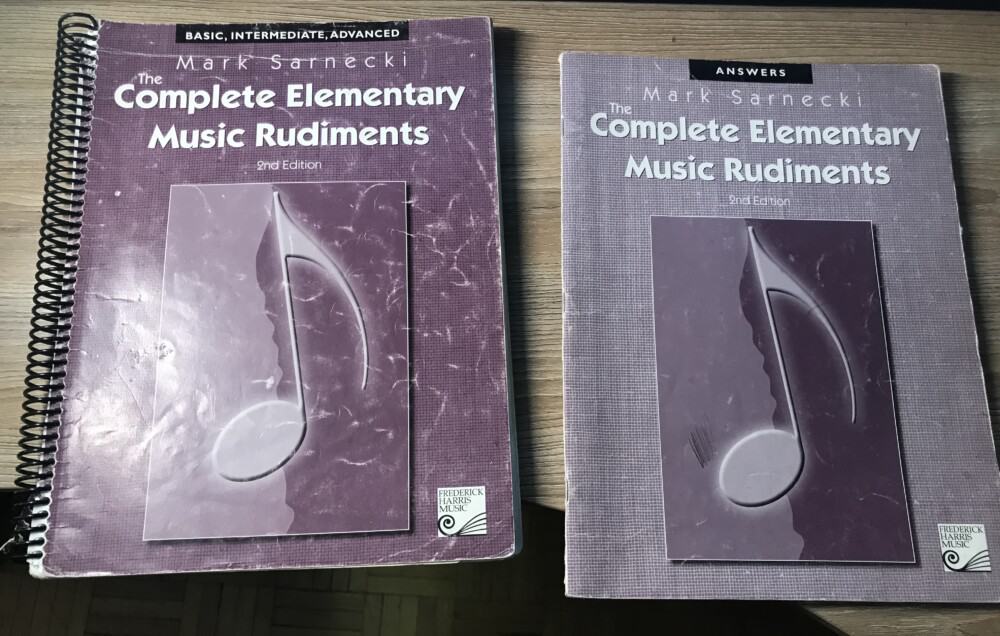
Mark Sarnecki’s book, The Complete Elementary Music Rudiments in addition to the accompanying Answer book was perhaps the most important purchase I’ve ever made in terms of music theory.
The book walks you through the basics of music theory, and really, from it, you come out of it a lot more knowledgeable. This isn’t just a book, however, it has actual exercises to ensure you can actually apply the knowledge. I really enjoyed this book and I’ve gone through it a number of times.
It’s worth mentioning that you should understand basic music theory before getting this book. I recommend going through the lessons on the website Music Theory before buying it because you’ll need a foundational understanding of some of the simpler concepts.
In my personal opinion, this is all the music theory you need to know to make good music and understand the fundamentals. You should always continue learning, but the material in this book will cover the most foundational aspects of music theory and it will demystify much of the process.
Mixing Audio by Roey Izhaki
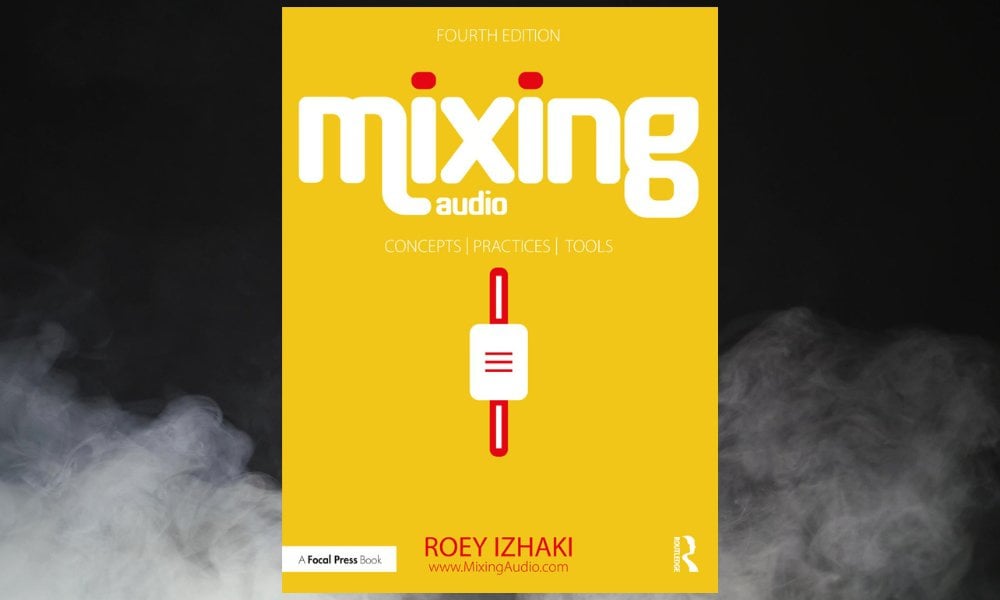
This a more advanced mixing book. I’d recommend reading this one last out of all the mixing books I’ve recommended thus far.
Pianoforall
Of course, every music producer knows that the piano, or the keyboard, is the instrument of choice because we all use the MIDI Keyboard. We use it for everything, including when we need to make instruments that aren’t even related to the piano, like drum beats, guitars, and flutes.
For that reason, I think at least learning how to play the piano at a beginner level is a great way to improve your musical abilities. PianoForAll is just that.
It’s a fantastic bottom-up way of teaching the piano that aims to get you started on the piano right away, without getting bogged down on boring music theory.
It also teaches you how to read music in a way that’s intuitive and simple. PianoForAll touches on several music genres as well, that way you can incorporate other styles in your music.
Punkademic’s Comprehensive Music Theory Course and All-Access Pass
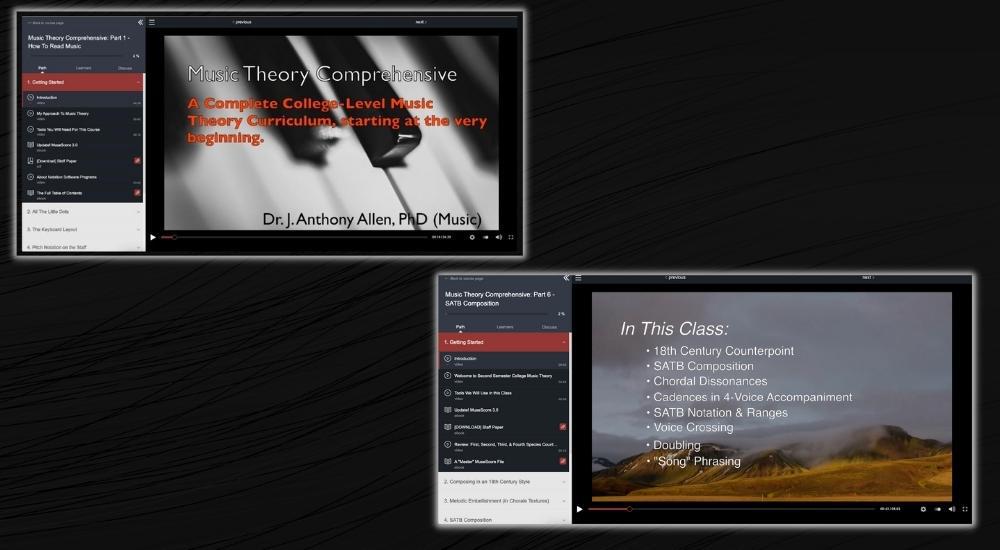
If you want a college-level course on music theory and you don’t want to pay anywhere near college prices, Punkademic’s All-Access Pass is for you.
I’m more of a reader than a lecture kind of guy, but this program is great for what it costs.
Singorama
Singorama is probably one of the best – and certainly the most popular – ways of learning how to sing and it’s easy to understand why. There are a lot of really great lessons, exercises, and key principles in this program that make it worthwhile.
With that said, however, nothing is going to beat a real-life vocal coach, so keep that in mind. I would say that the best thing to do if you want to learn how to sing is to use Singorama to gain confidence in yourself if you’re shy, and then move on to an in-person trainer.
The Art of Mixing by David Gibson
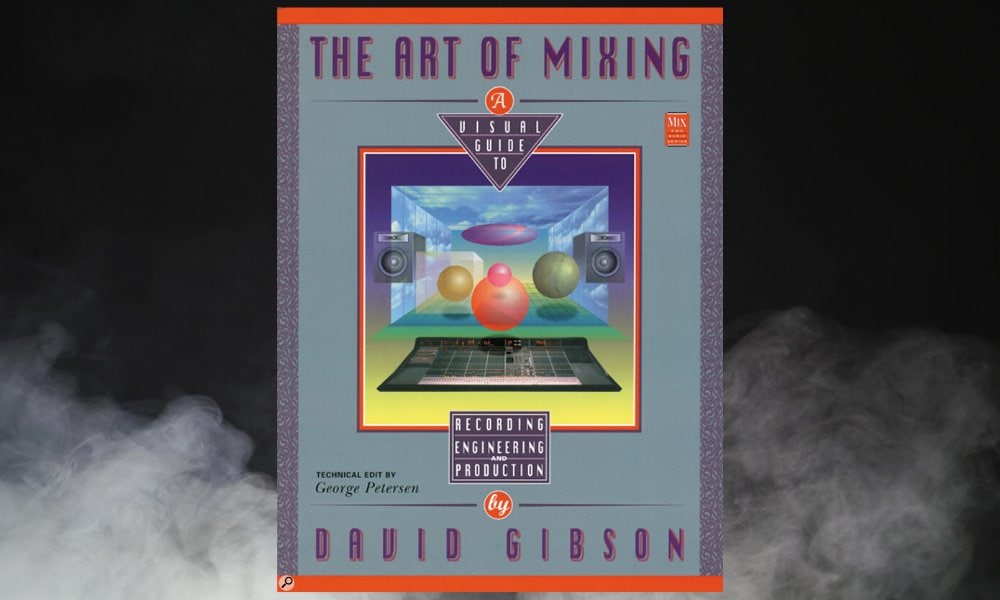
This is a cool, visual, and practical book on mixing too, however, it’s just a bit more advanced. I would read this after Dittmar’s book and Bobby Owsinski’s book.
The Mixing Engineer’s Handbook by Bobby Owsinski
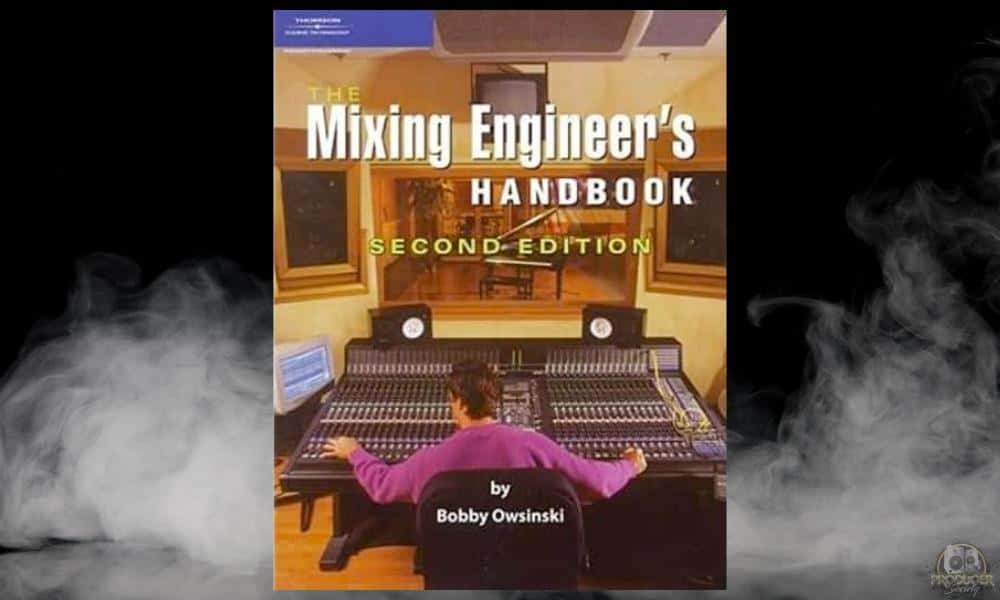
This is another great audio engineering book that’s a bit more advanced than the Audio Engineering 101 book from Tim Dittmar. I’ve also read this book several times and enjoyed it a lot.
In this handbook, he touches on a number of the most common practices among mixing engineers and also features interviews with some of the more prolific engineers.
My favourite aspect of this book was its applicability and practicality. It’s not bogged down with theoretical discussions, but rather, how to go about using different techniques to increase the quality of your mixes.
For instance, in one section, Bobby touches on how to go about using EQ, including a step-by-step process, as well as useful theories and concepts to keep in mind.
He does the same thing with compression and other dynamics processors. Reach Tim Dittmar’s book first, and then read this one afterward.
The Musician’s Guide to Theory and Analysis and the Workbook from Jane Piper Clendinning
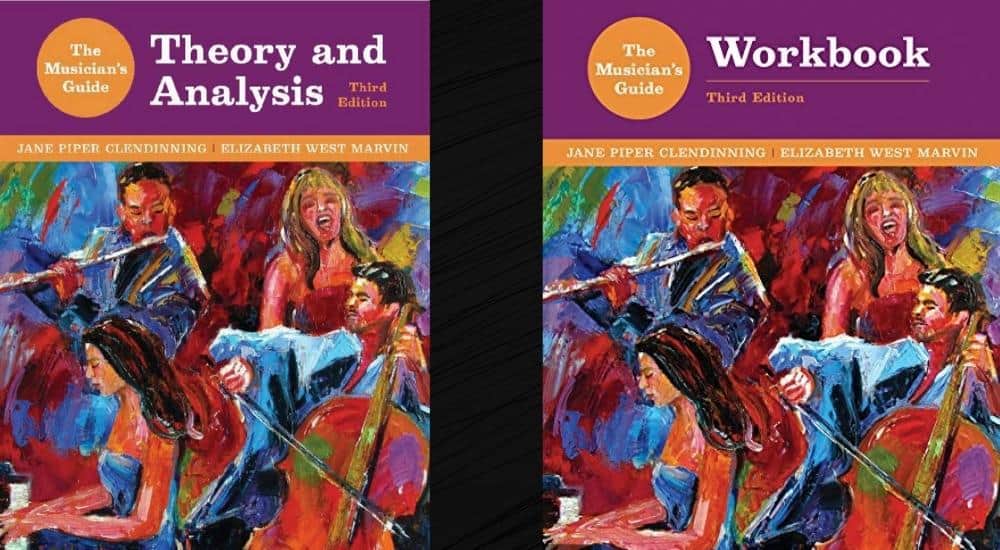
Jane Piper Clendinning’s books are among the best on music theory. That’s why they typically fetch a premium price.
In my opinion, the top 3 books in the order that you should read them are:
- Mark Sarnecki’s Complete Elementary Rudiments
- Clendinning’s Analysis and Workbook
- Mark Levine’s Jazz Theory
Computers, iPhones, and iPads
iPhone Pro
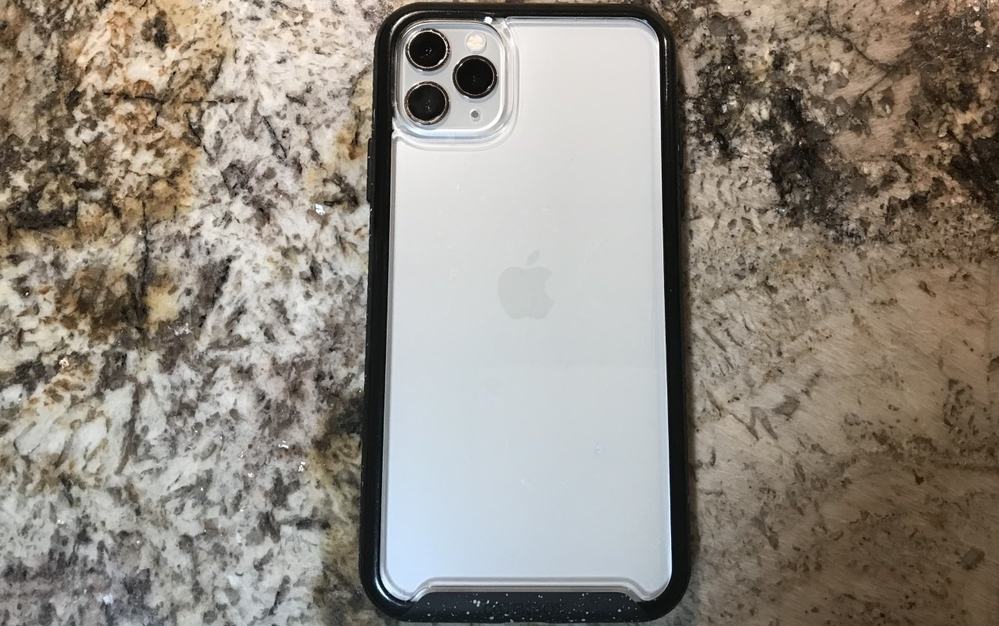
iPhones and iPads are no joke at this point.
Their power and utility are only increasing as the years go by, making it a better option all of the time for making music on the go.
Not only is the iPhone Pro Max 11 a fantastic phone for its camera, which is arguably one of its greatest features, but using Garageband on it is great and fun.
GarageBand has been on iOS for years, but on account of the limitations of the hardware of the phone, it’s not always a great option. This will likely change in the future, however.
As I’ve written in other articles about the importance of choosing the right device, you want to make sure that the phone you buy has the most storage space, memory, and power, otherwise, you’ll be burdened by crashing and other problems.
iPad Pro 11 (2TB, M1 Chip, 16GB of RAM)
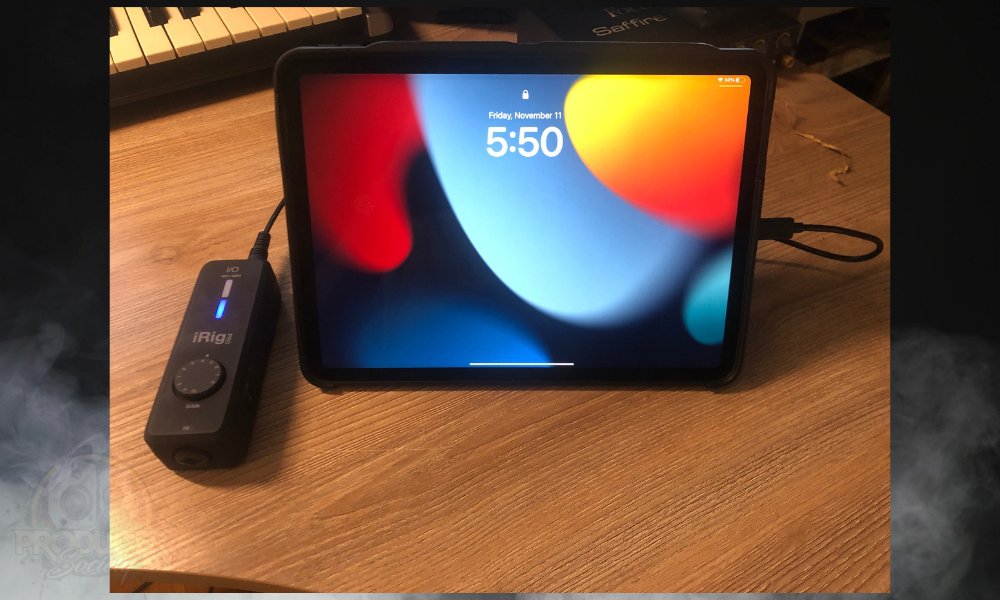
I’ve got a 2021 iPad Pro 11″ with 2TB of Storage, 16GB of RAM, and an M1 chip and it exceeds my 2017 MacBook Pro by a large margin. It’s way faster, more versatile, and just a much more powerful computer in general.
Here’s a great tip for you: don’t get the super expensive keyboard/case for it. Get the ZUGU iPad Pro case (on Amazon) and a basic Apple Magic Keyboard (also on Amazon). This way your iPad is indestructible and your keyboard works way better.
I use the iPad for a couple of different things: Logic Pro for iPad, GarageBand iOS, and I use it to work on my website. Works awesome. Paired with an Apple Pencil as I mentioned earlier, you’ve got an incredibly powerful and useful device that won’t break easy.
MacBook Pro
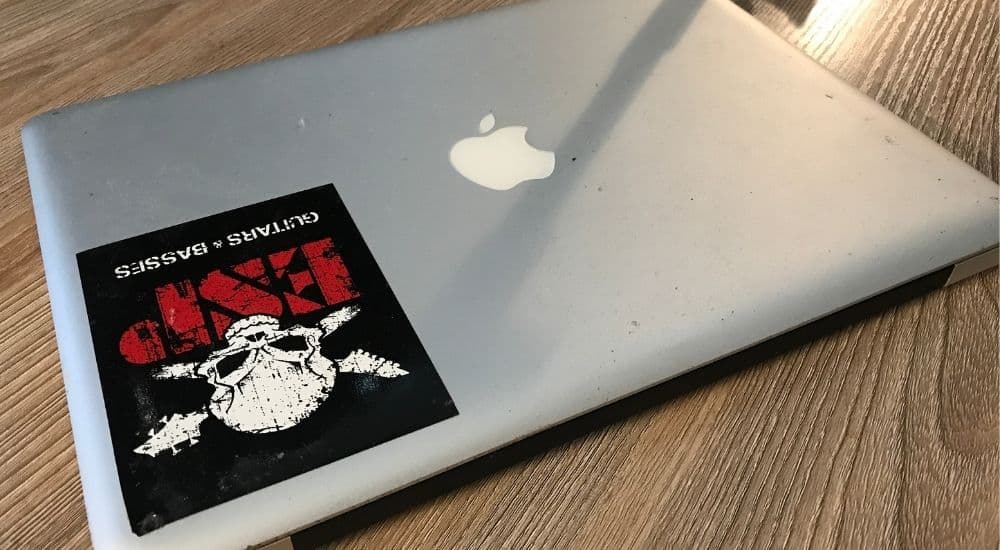
The picture above is my old MacBook Pro from 2010. Things have changed a lot since then. The new MacBook Pros with the M1 and M2 MAX chips are awesome for music production. Imamusicmogul has a few great videos on this.
When purchasing the right MacBook Pro for music production, similar to other devices, more RAM, storage, and processing power is always better. They all have solid-state drives by default so no worries there.
Don’t make the mistake that I made when I bought a MacBook Pro and cheap out on storage and RAM. I’ve been paying for that error ever since.
I’m using a 2017 MacBook Pro right now and it only holds around 120GB of storage, and I find that it’s just barely powerful enough to do what I need it to.
Miscellaneous Products
Anker Powerhouse 90

I use this power bank every day. It’ll charge a new iPad Pro and an iPhone 1 time, 1 MacBook Pro one time, or an iPhone about 7-8 times. It’ll probably charge AirPod Pros 40-50 times, although, this is just a guess.
Not too much to say about it other than it works. Keep in mind it does weigh 2-3 pounds so It’ll add extra weight to your bag.
Metronome
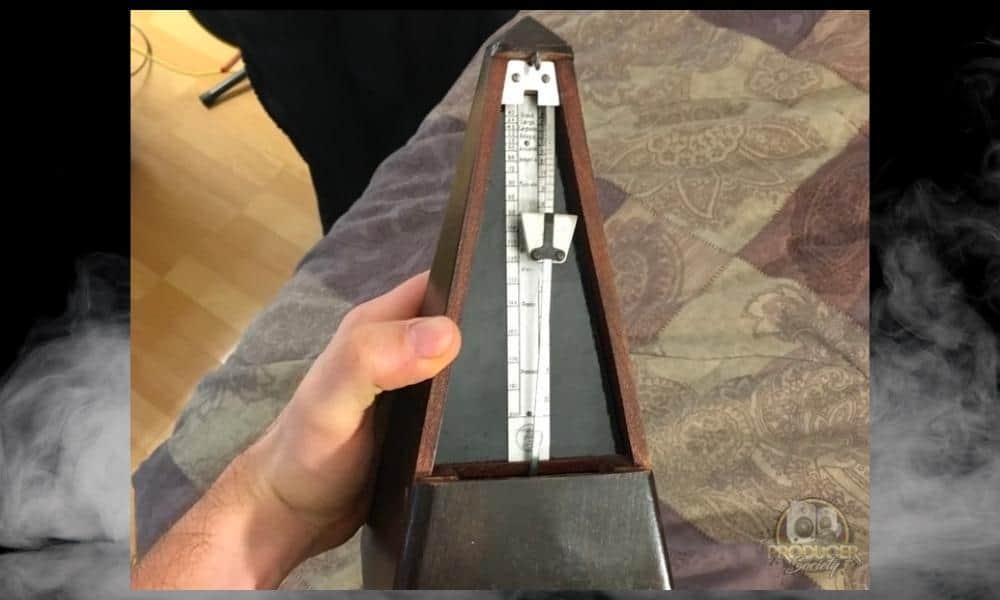
Not much to say here. If you’re in the market for a metronome, get a wooden one. Sometimes I get tired of the digital world and I just want to use an old-fashioned tool that doesn’t require me to grab my phone.
Zoom H2
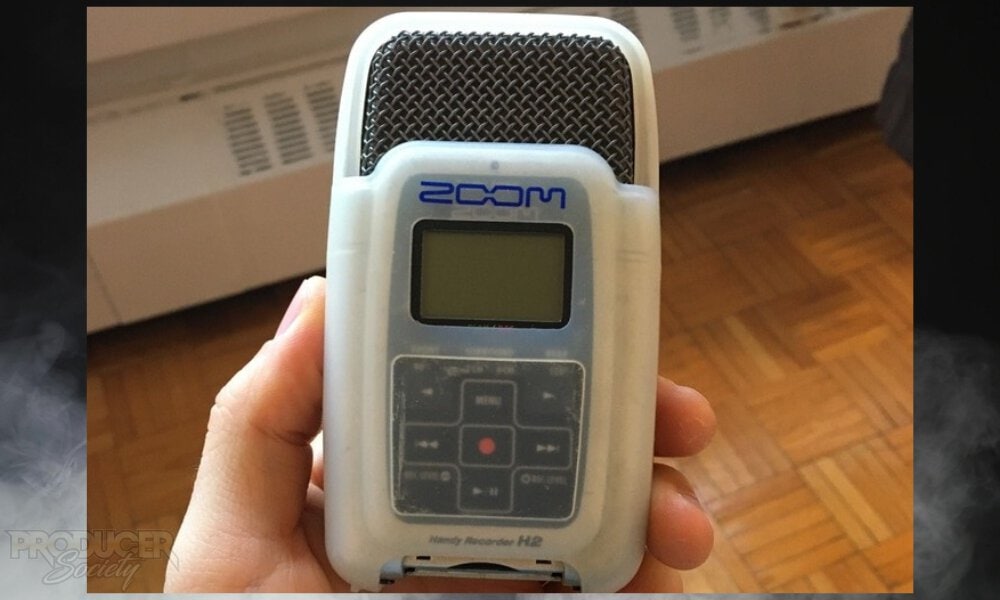
Amazingly, I’ve had the Zoom H2 for about 15 years and it still works. However, I left batteries in it one time and they exploded, essentially ruining the battery compartment (it still works with a charger though).
I wouldn’t recommend getting this one because it’s old. Get the H2n if you need a field recorder for a decent price.
Stands and Mounts
K&M Kick Drum Stand

A couple of years ago, I went to buy an SM57 from the music store and I realized that I needed to get a stand for it too. The salesman recommended I grab a much cheaper stand but I knew better.
I wound up buying the more expensive stand that he said was more commonly used by professional musicians and I’m glad I went with this one because it’s top-notch.
One of the best ways to tell that a stand is high quality – other than the fact that it’s made out of steel – is how long and sturdy the bottom three legs are. If the legs are made of steel and they’re quite long, you know it’s not going to get knocked over easily.
More importantly, I find that the stand’s mechanics are incredibly intuitive and they work. By that, I mean you can move the mic around in pretty much any way that you need to. It’s an excellent stand and I’m very glad I didn’t cheap out.
K&M Mic Stand 26145
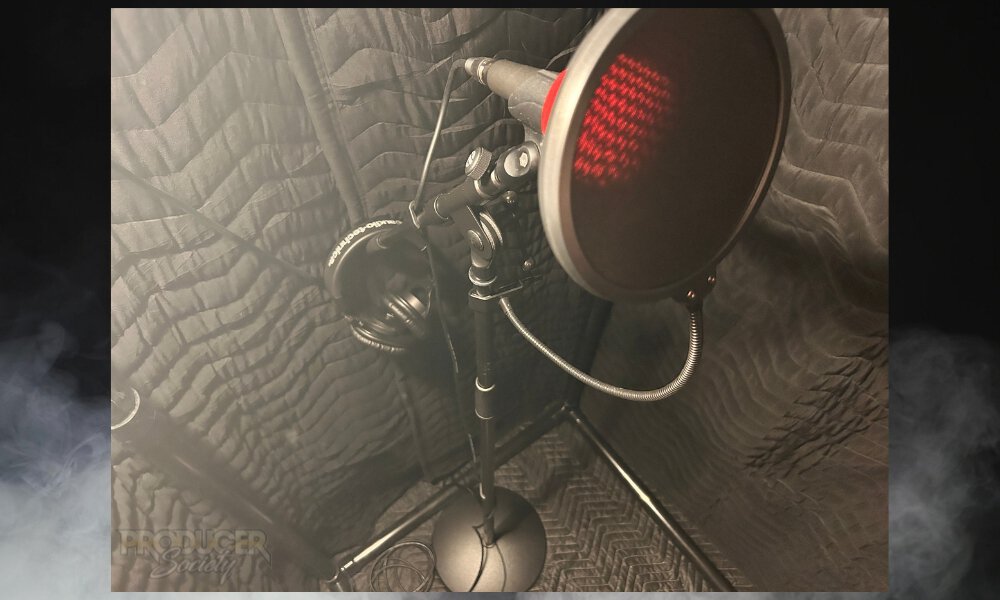
K&M is another brand that I just trust. At a certain point, I just get sick of buying things twice after I cheap out initially and get burned with an inferior product that’s so bad that it’s rendered useless.
If I need a mic stand, I go to K&M and they never disappoint. Their equipment is premium. Yeah, you pay more for it, but I don’t care. I want something that works and I want it to work in 30 years.
Manfrotto Tripod
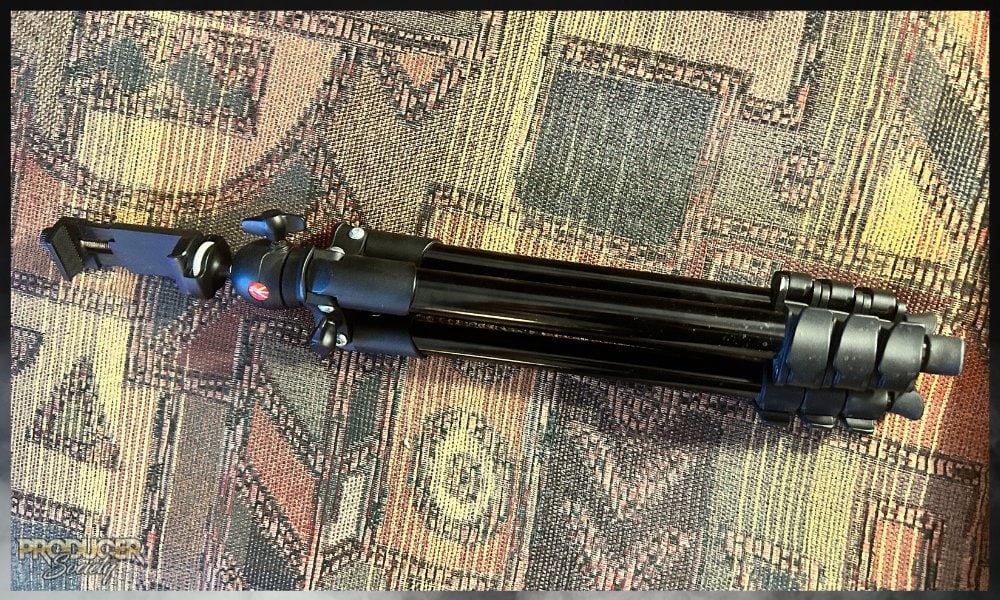
After messing around with a ton of unreliable and inconsistent garbage on Amazon, I finally found a camera company with good products. Manfrotto is what I buy when I need some kind of mount or tripod.
Their products are always well-built, sturdy, reliable, made out of steel, and durable. Gets a 10/10 from me dawg.
Manfrotto Smartphone Stand

As I said a moment ago, Manfrotto is my go-to for mounts, tripods, and other camera equipment. I don’t deviate from this rule and I’m never disappointed. The clip for it is here.
The clamp on this is extremely powerful though. You have to press hard on the button to disengage it.
Sioti Camera Mount
This is another one of those great pieces of equipment that don’t cost a fortune but are useful for so many different things.
For instance, I use it for creating guitar-play-along videos and beat-making videos, and it also performs other weird functions like holding my Laptop cable in place on my desk.
There’s simply no limit to the amount of things you can use this for. And I use it for almost everything. I can attach my Nikon D7000 to it, or I can use my iPhone.
It cost me very little money and it’s certainly been valuable, so I recommend getting one.
Websites
ChatGPT (GPT4) and DALL-E 3
The whole world knows about GPT4 and DAll-E 3 now, and I’m a big proponent of it. I typically use it every day, and it seems like I learn more and more about the amazing things it can do.
I’ve used it for images, and designs, I’ve used it to index and categorize information, and I’ve used it as a computer programmer. This tool can do a lot. I subscribe to GPT4 and it’s worth it.
Every Noise at Once
The Every Noise website is a tool that allows you to mix different genres to see how they might sound. If you’re looking for a new vibe to try out, you could always give it a try.
I wouldn’t be surprised if a budding artist used a tool like this to come up with something entirely new and revolutionary.
Hook Theory
The Hook Theory site is a crazy tool. Essentially, it uses AI and probability models to give you an idea of what chord will sound best.
They’ve indexed a bunch of different popular chord progressions, so if you give it a chord, it’ll tell you which chord should come after. It’s basically just a cool way to help you break out of a creative block.
Music Theory (dot) Net
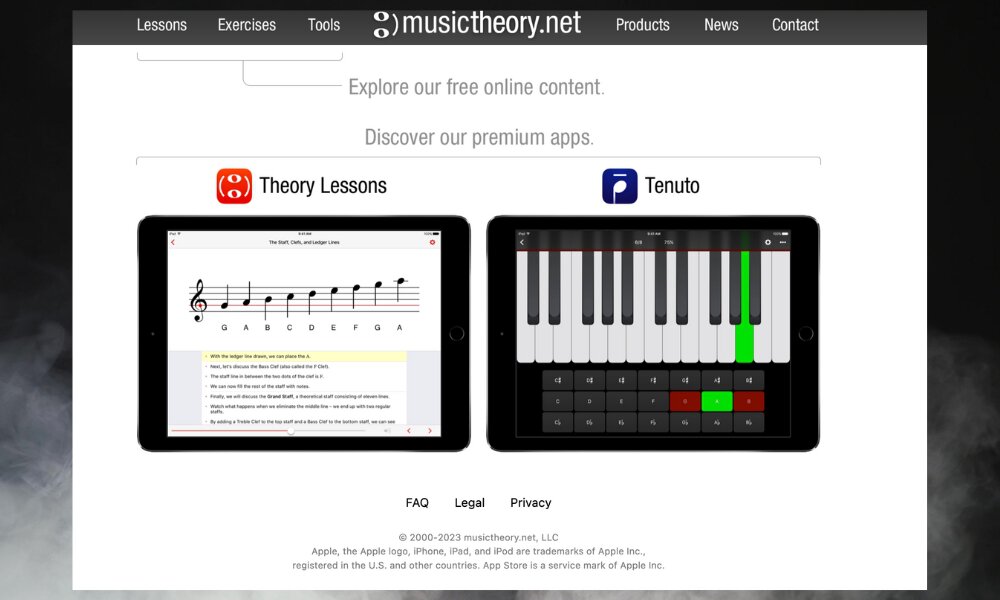
If I’m not mistaken, the Music Theory website is one of the oldest sites on the entire net. I think it goes back to the 1990s, and the thing about it is that it’s still as useful as ever.
They’ve got great tools, calculators, and lessons you can use. Believe it or not, I learned a good chunk of what I know from this website.
The Music Industry Toolkit
The Music Industry Toolkit is a website that catalogues many different resources for music producers and musicians – and at every level. They’ve got all kinds of tools on there that you can use.

 Written By :
Written By : 